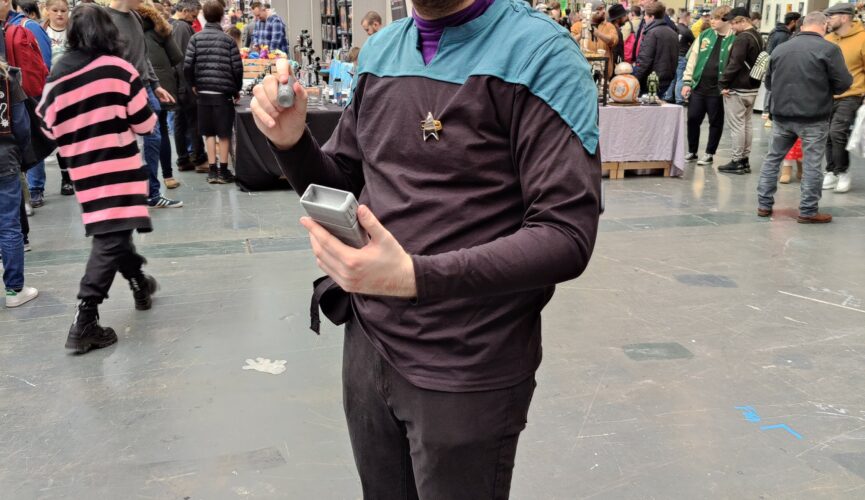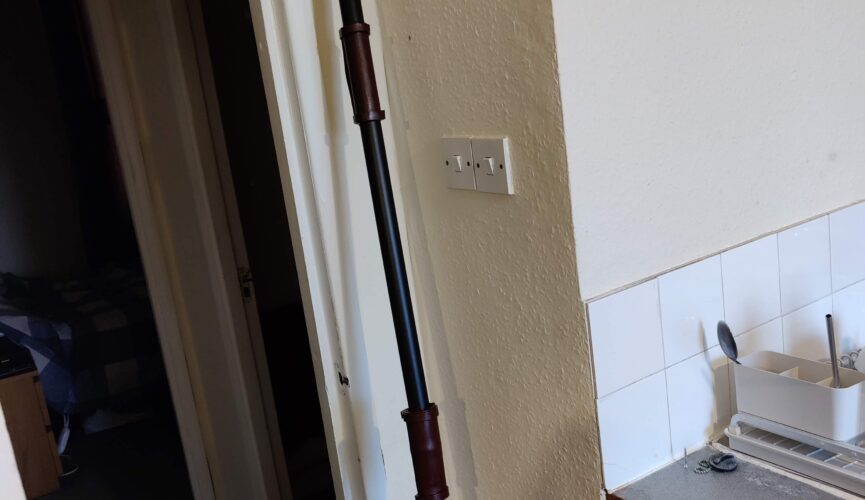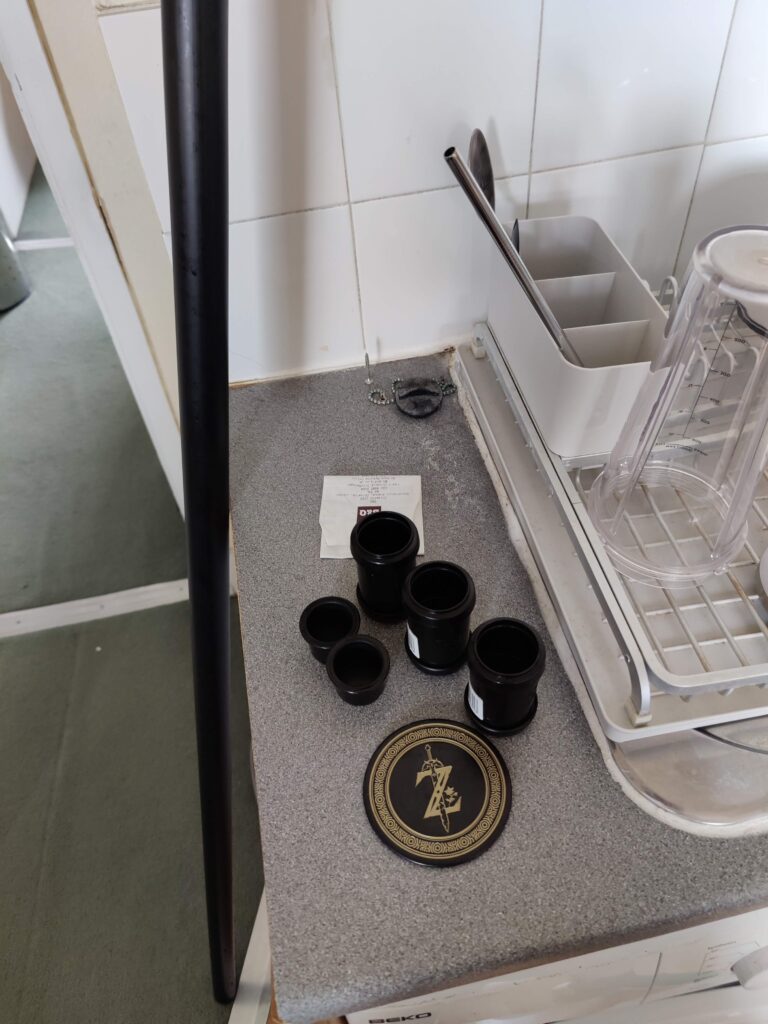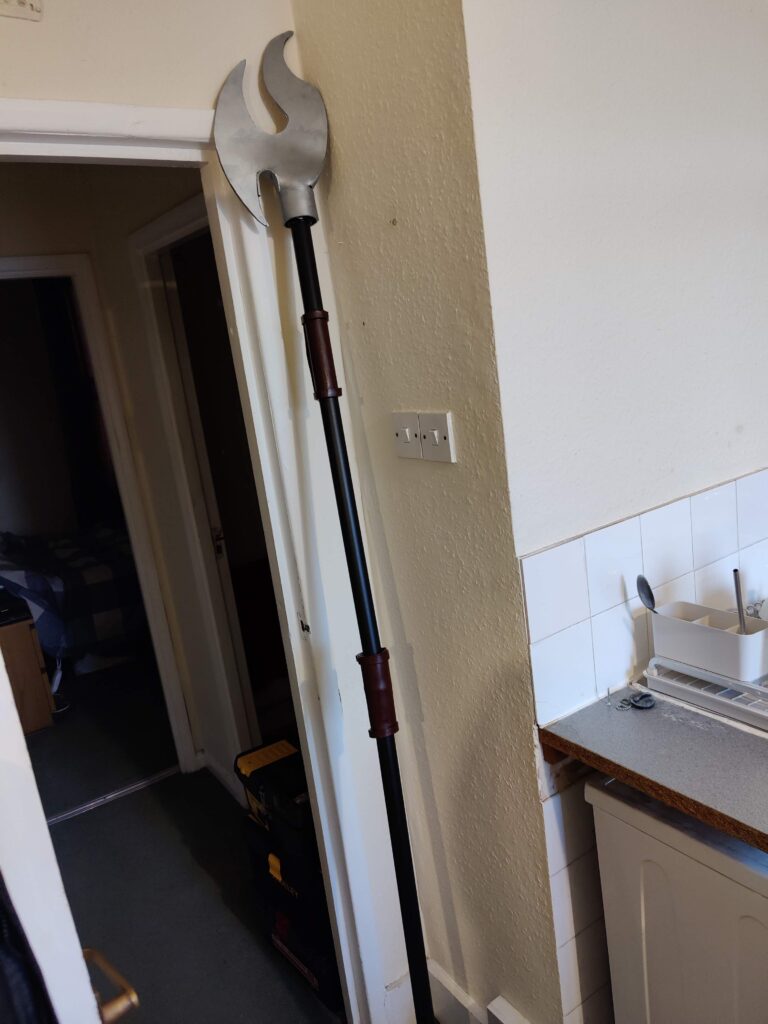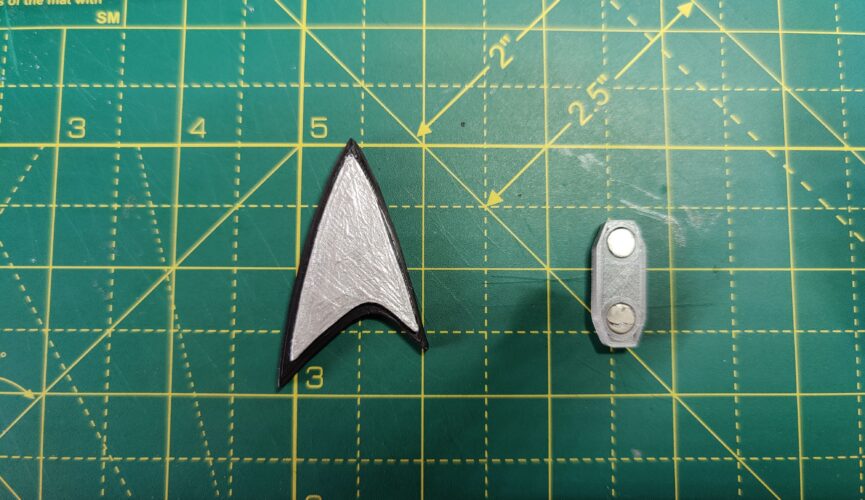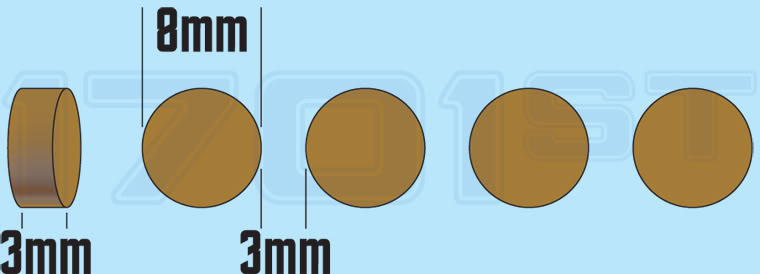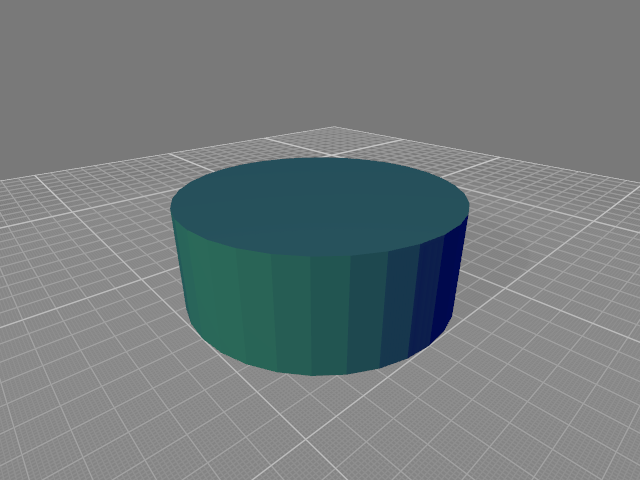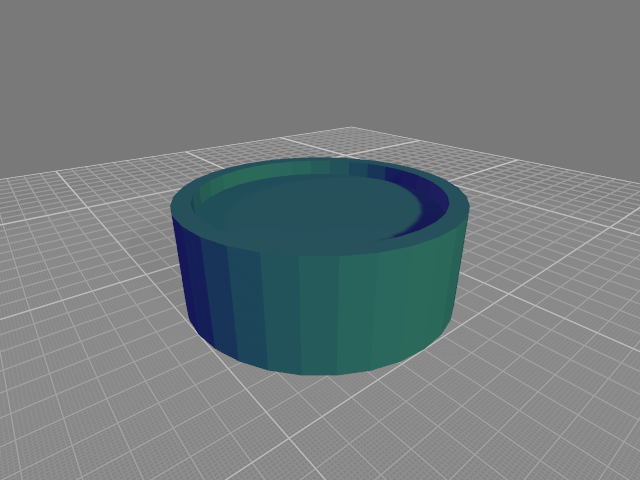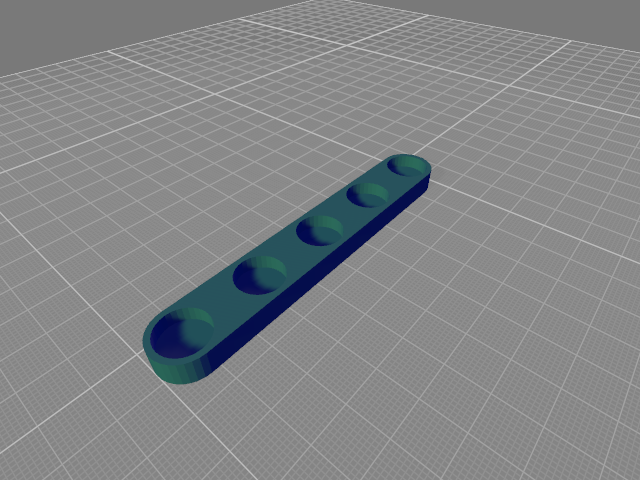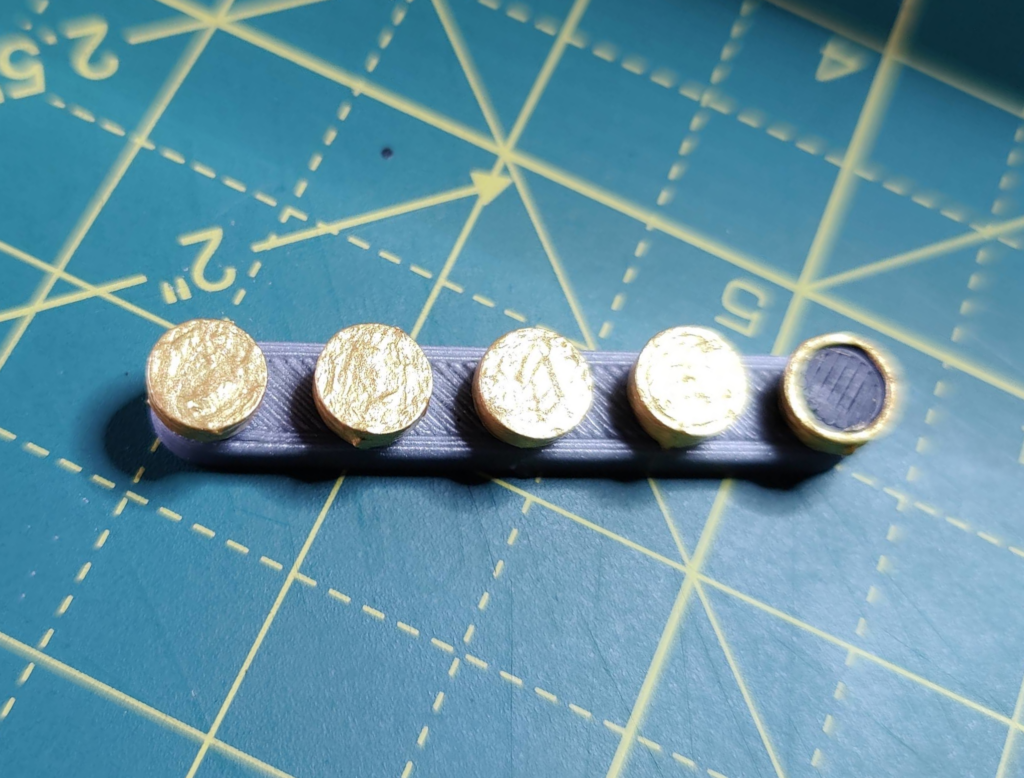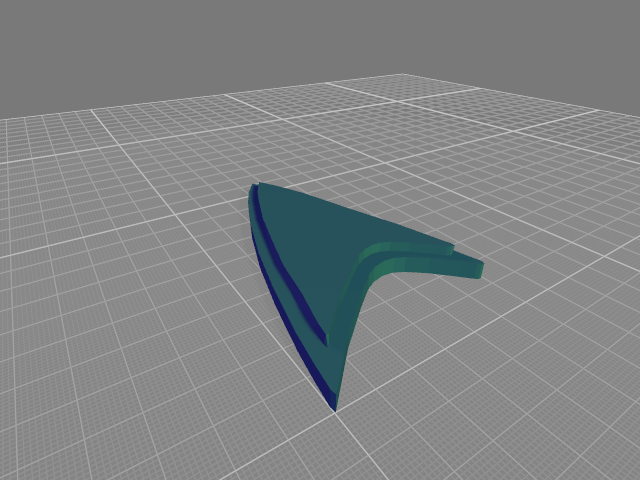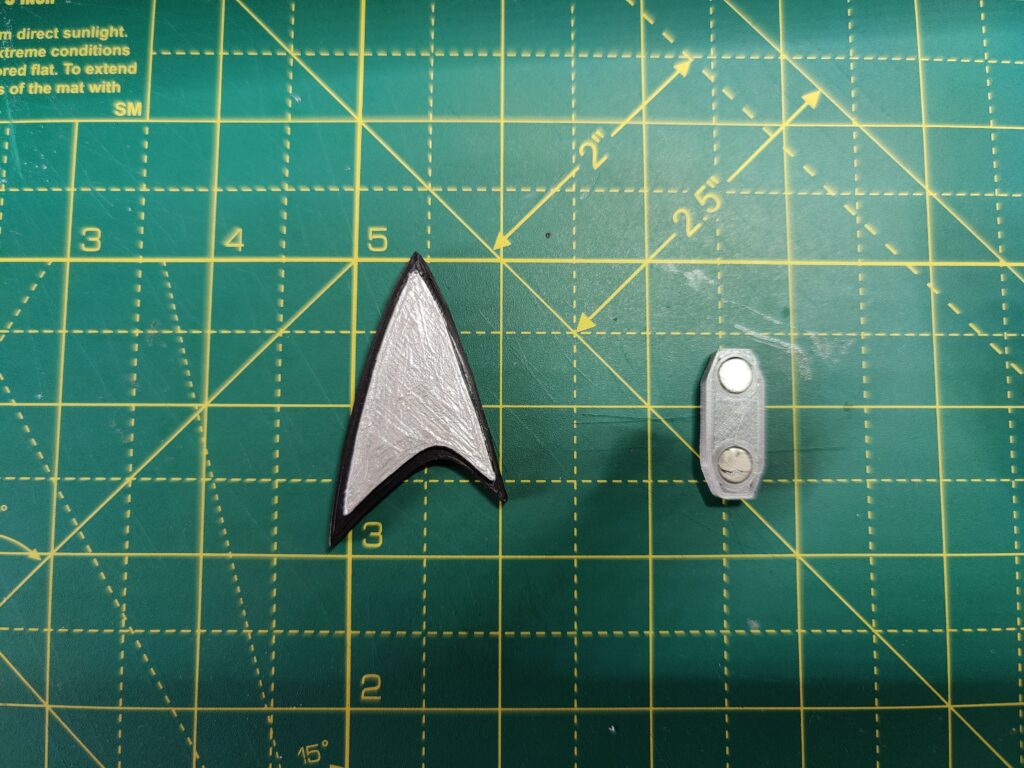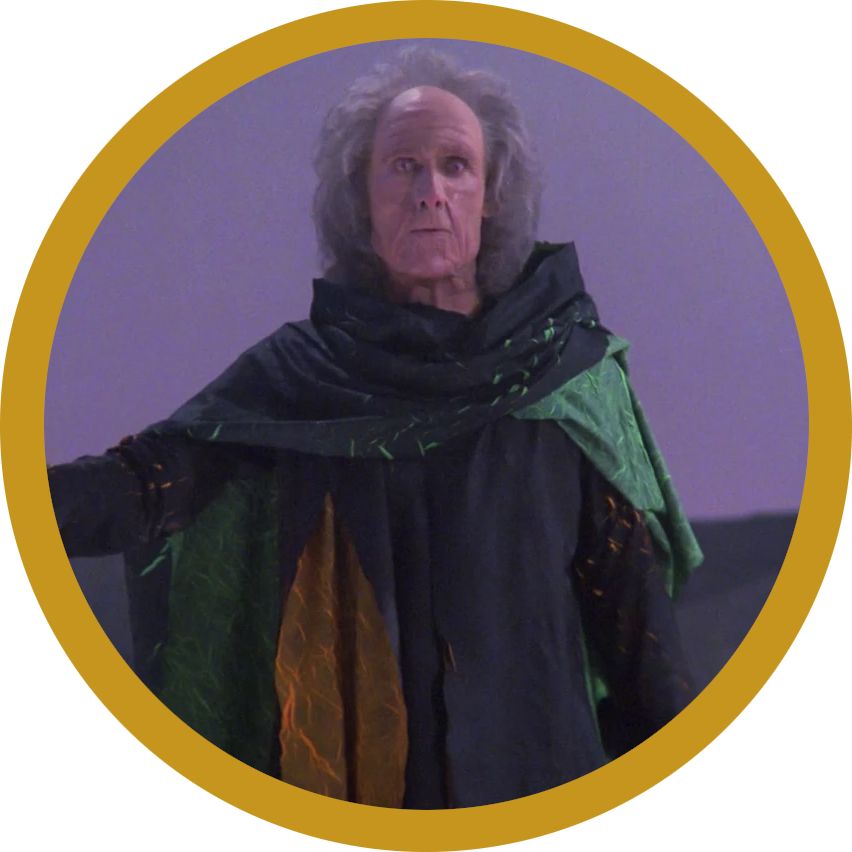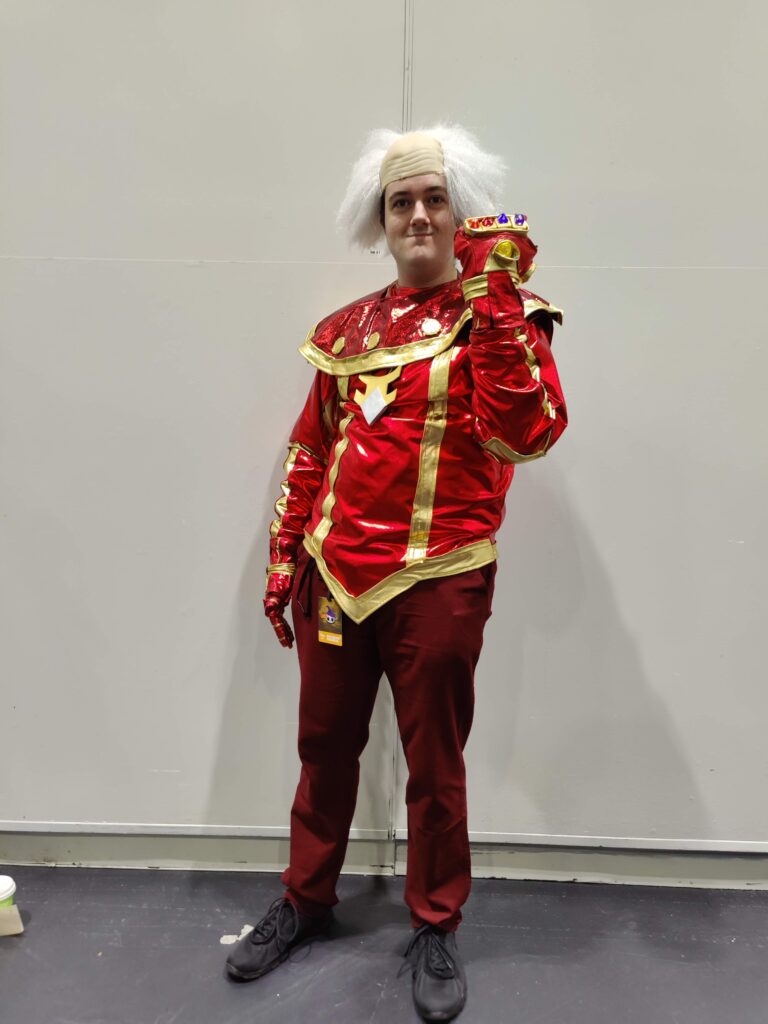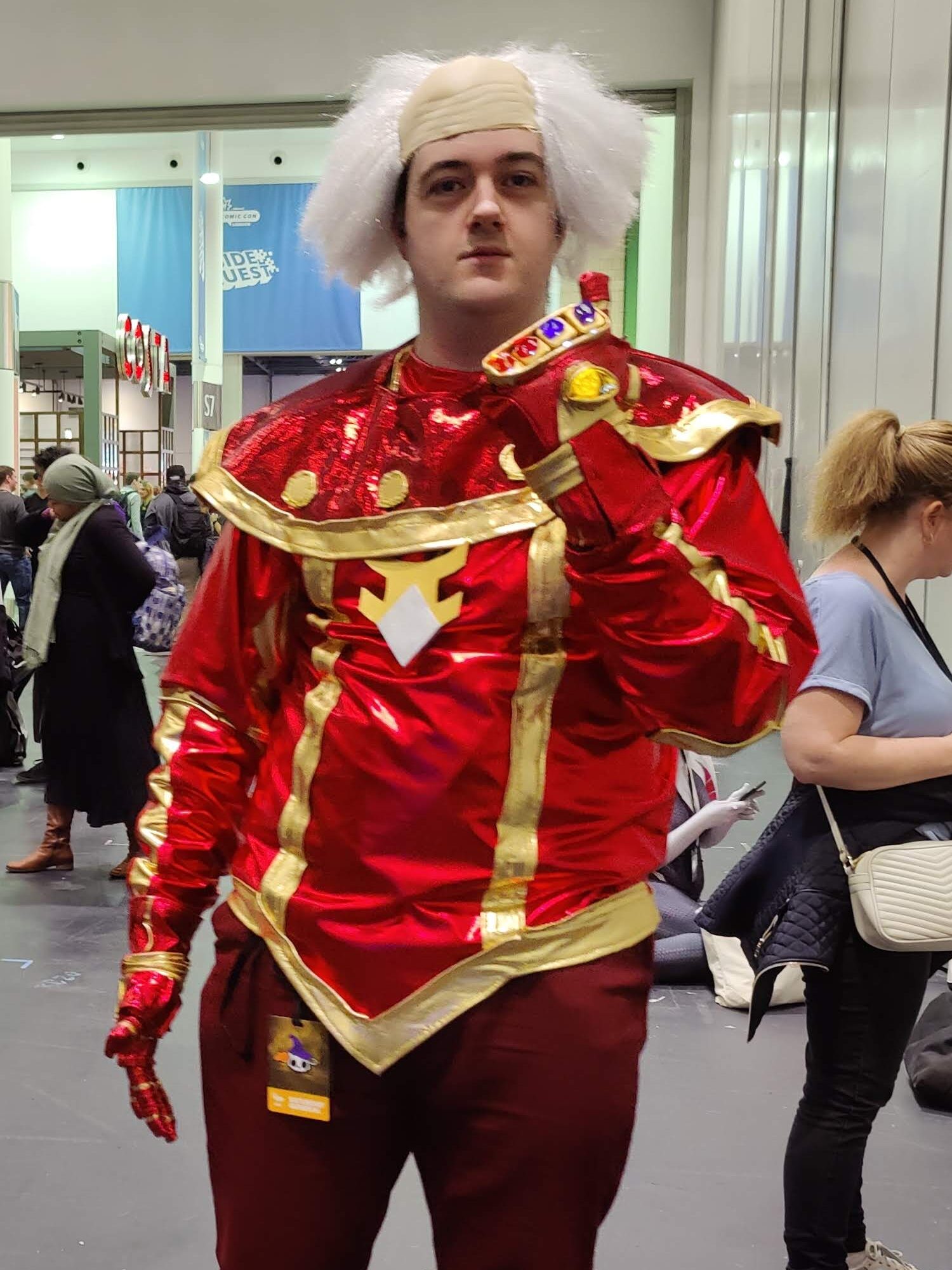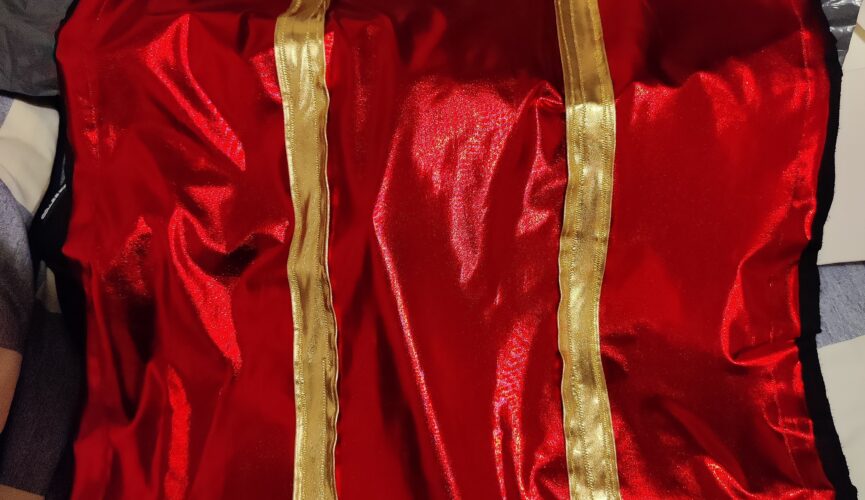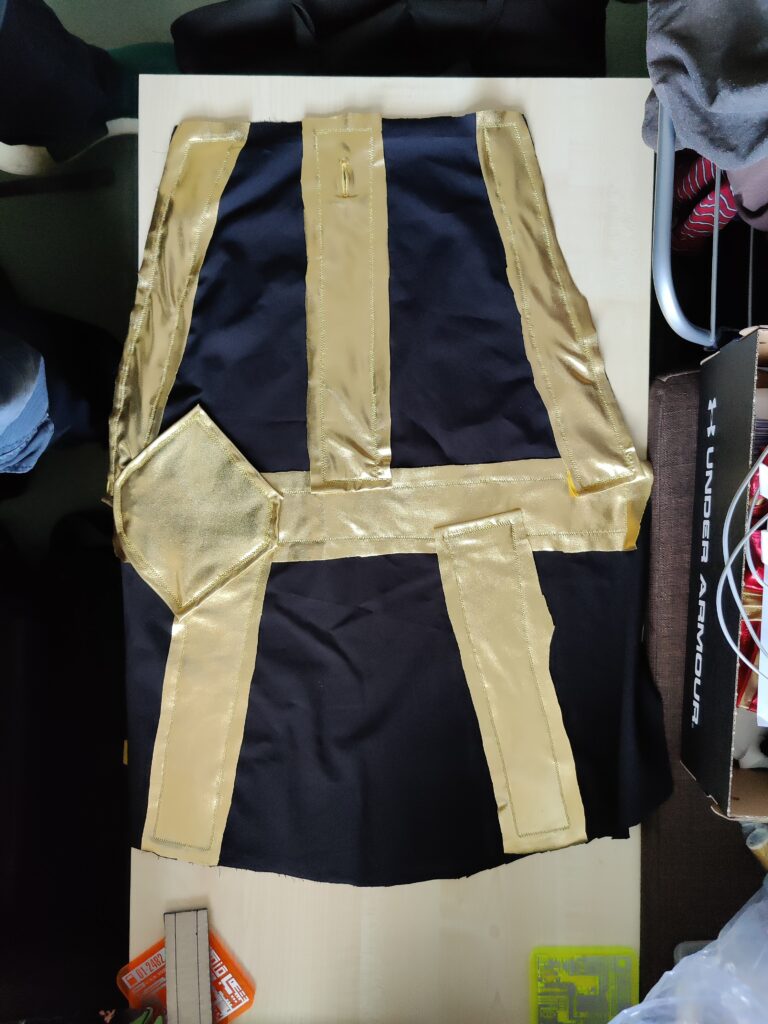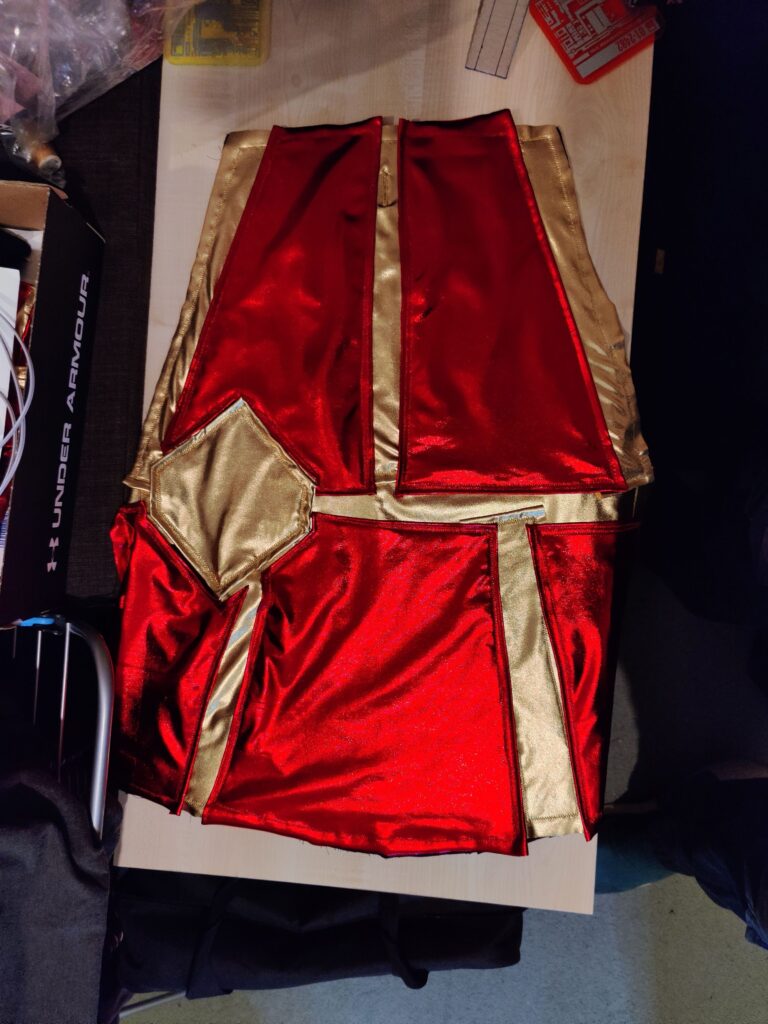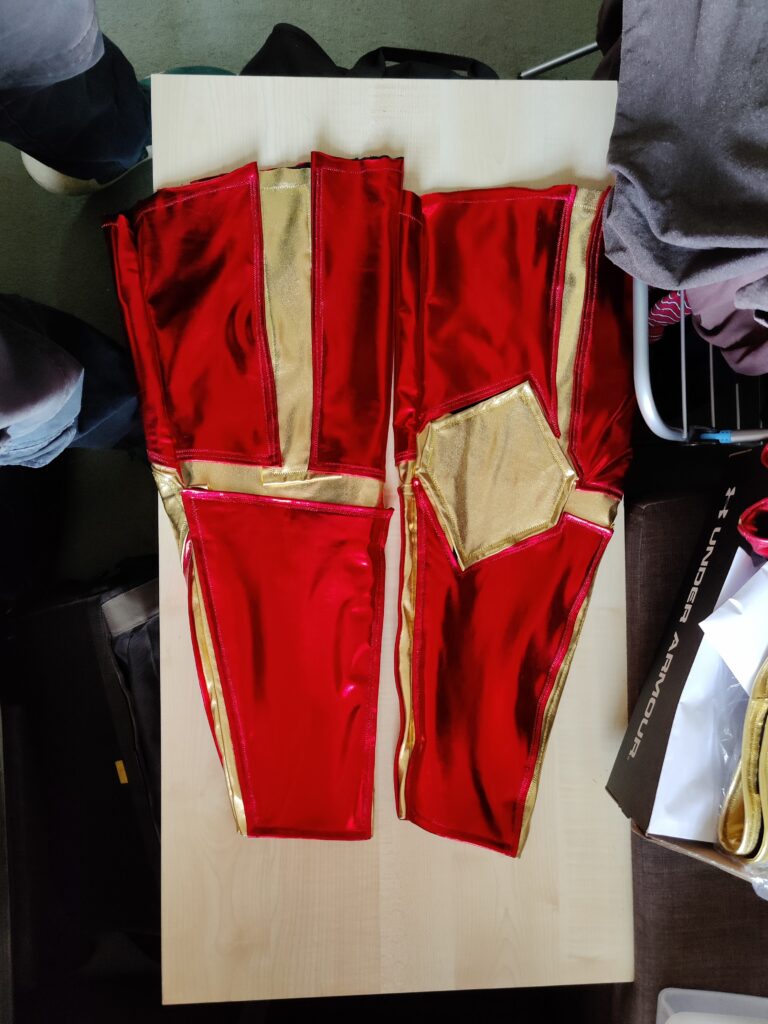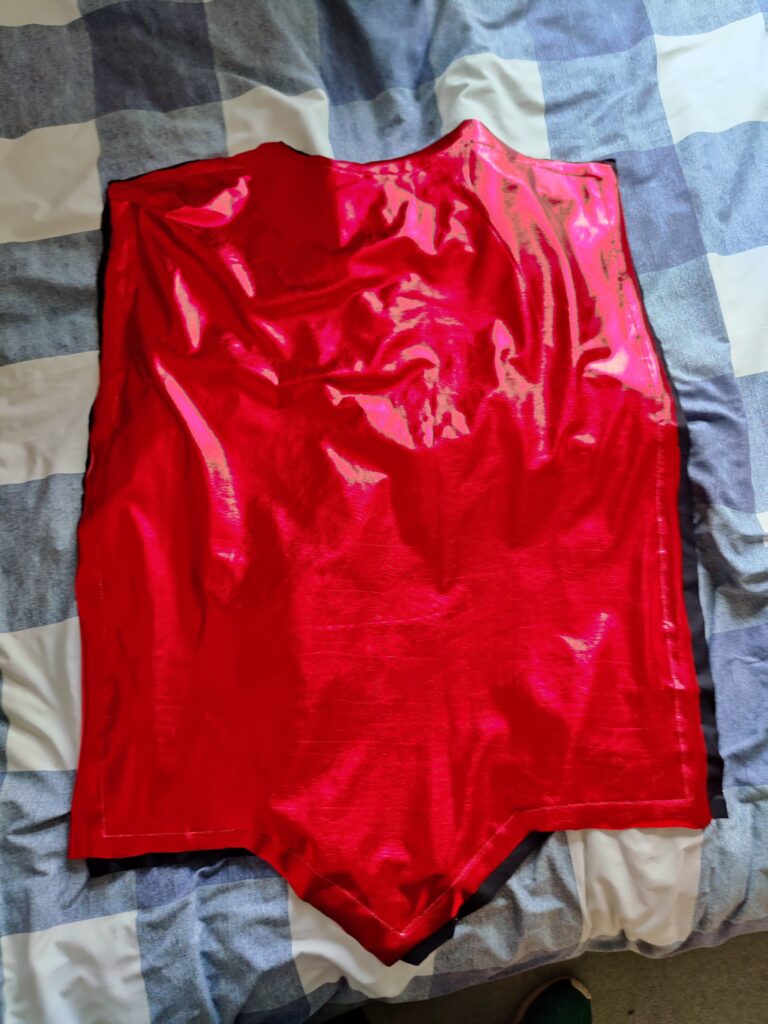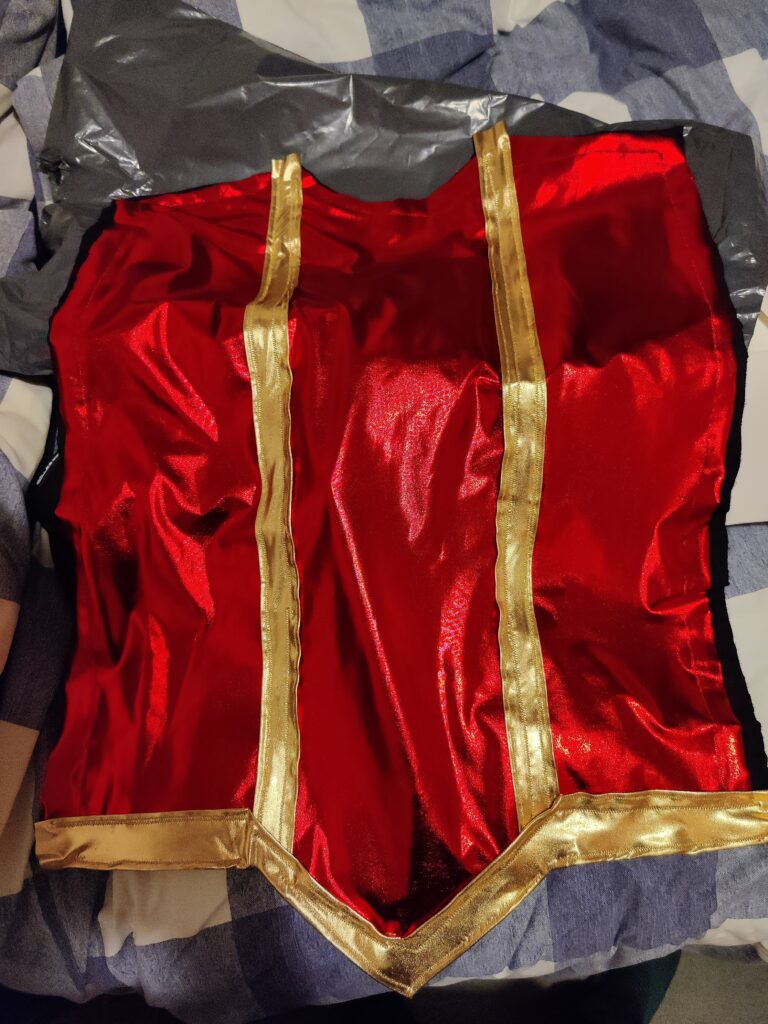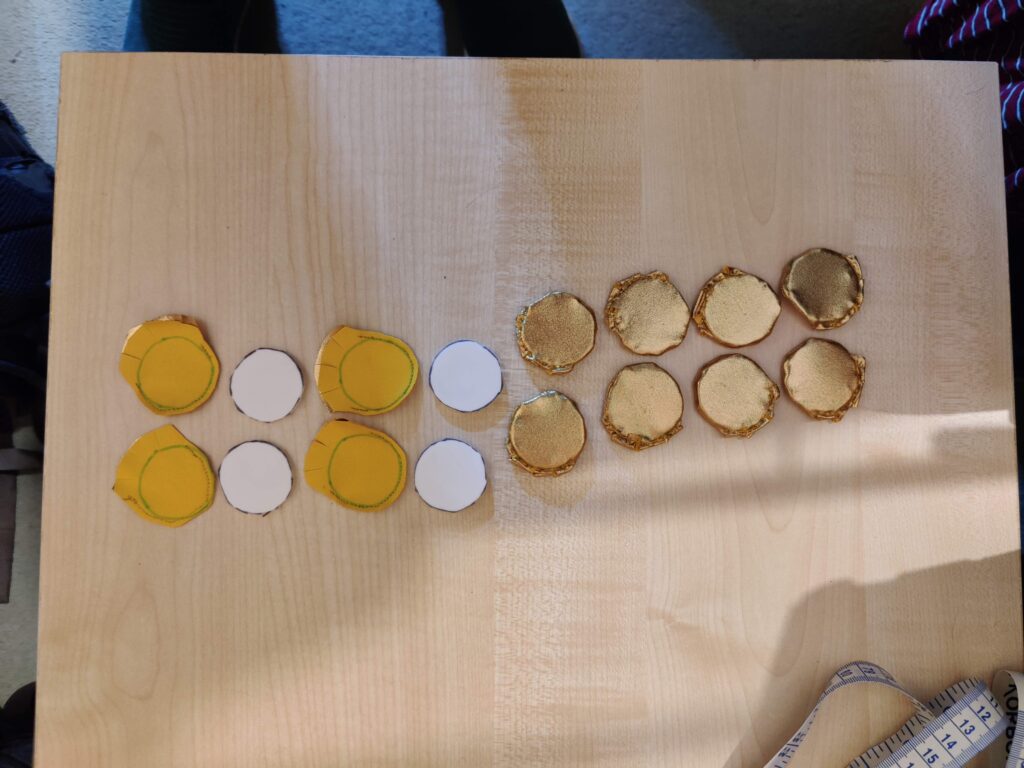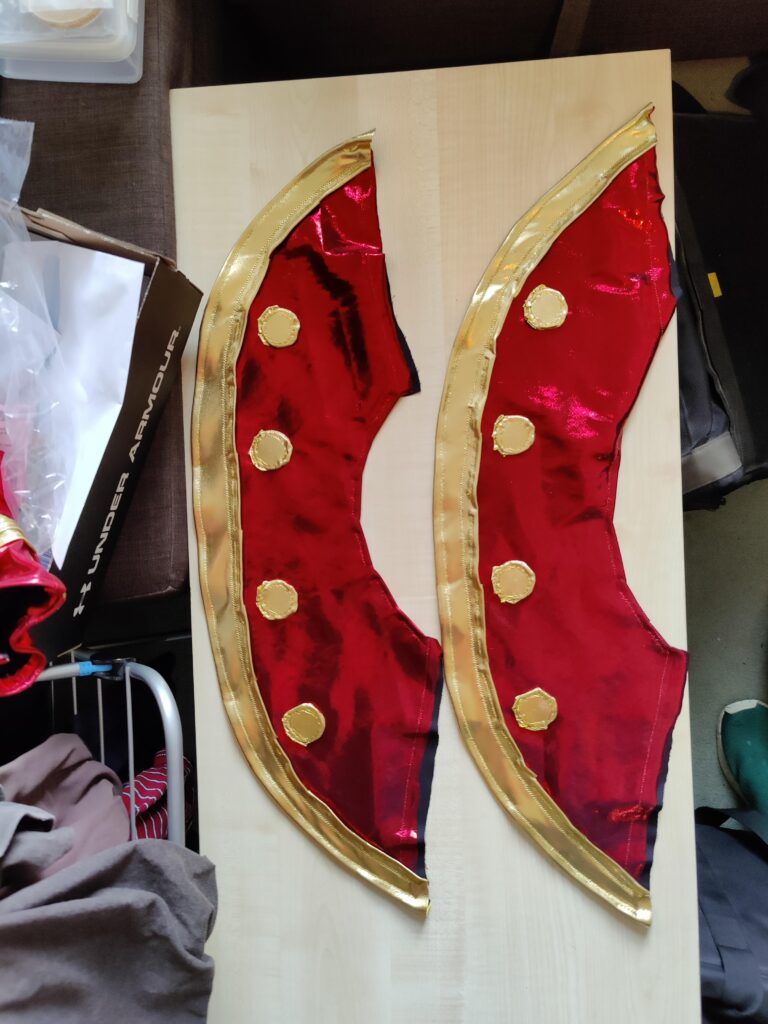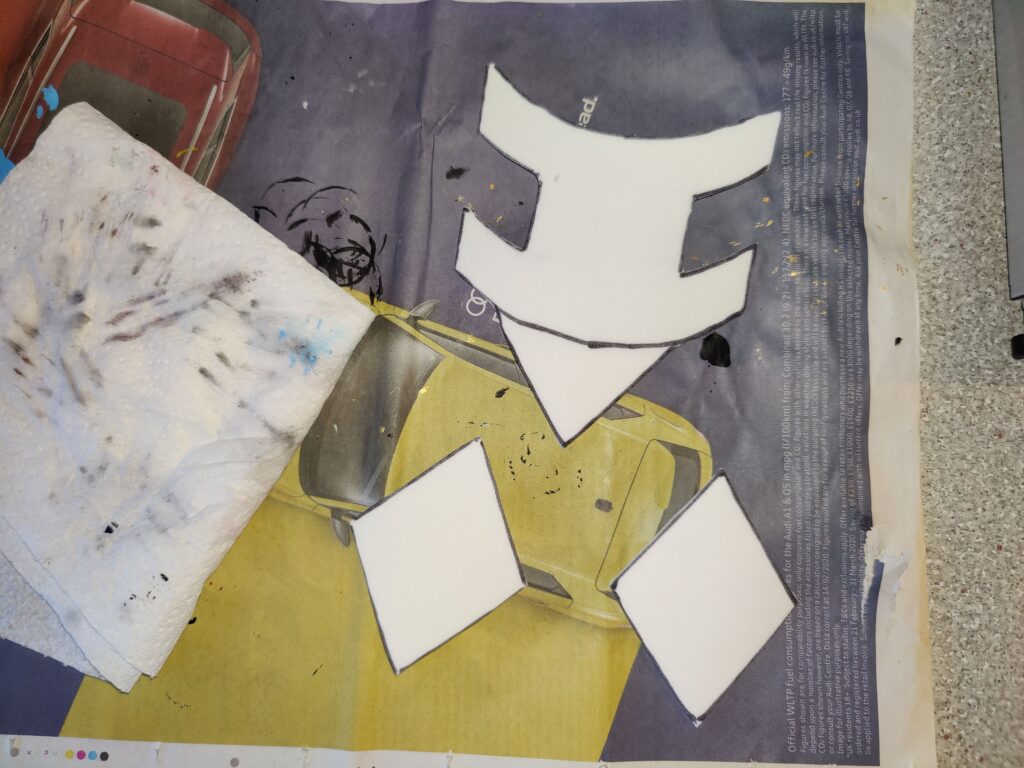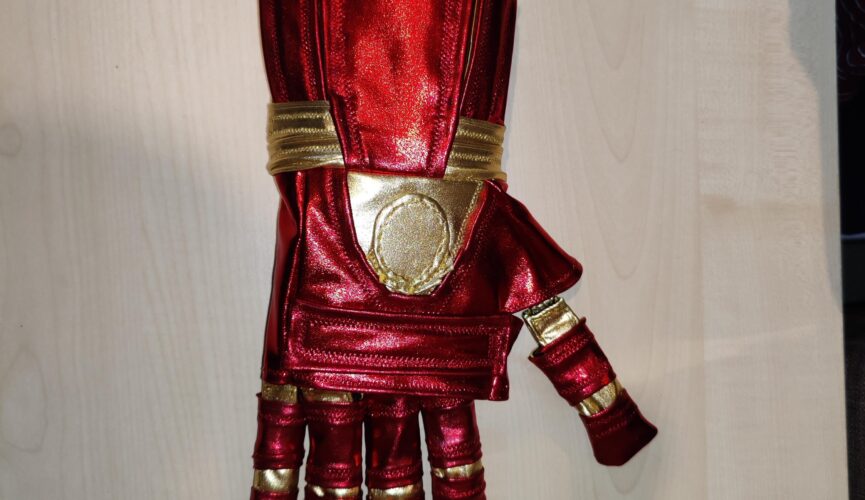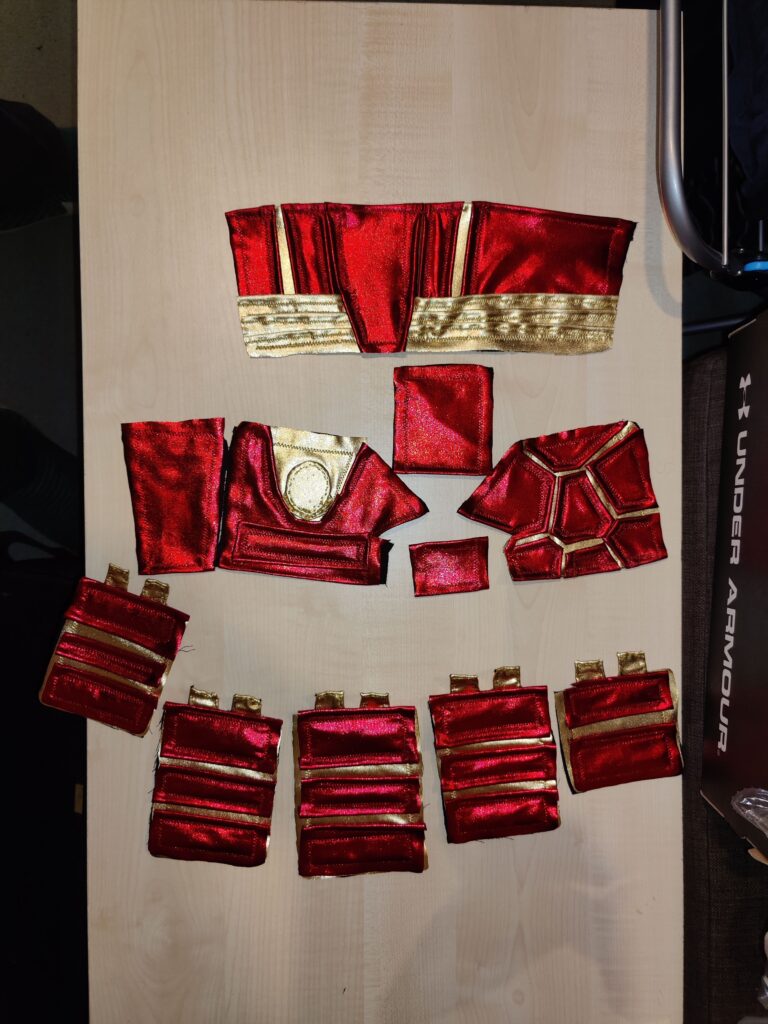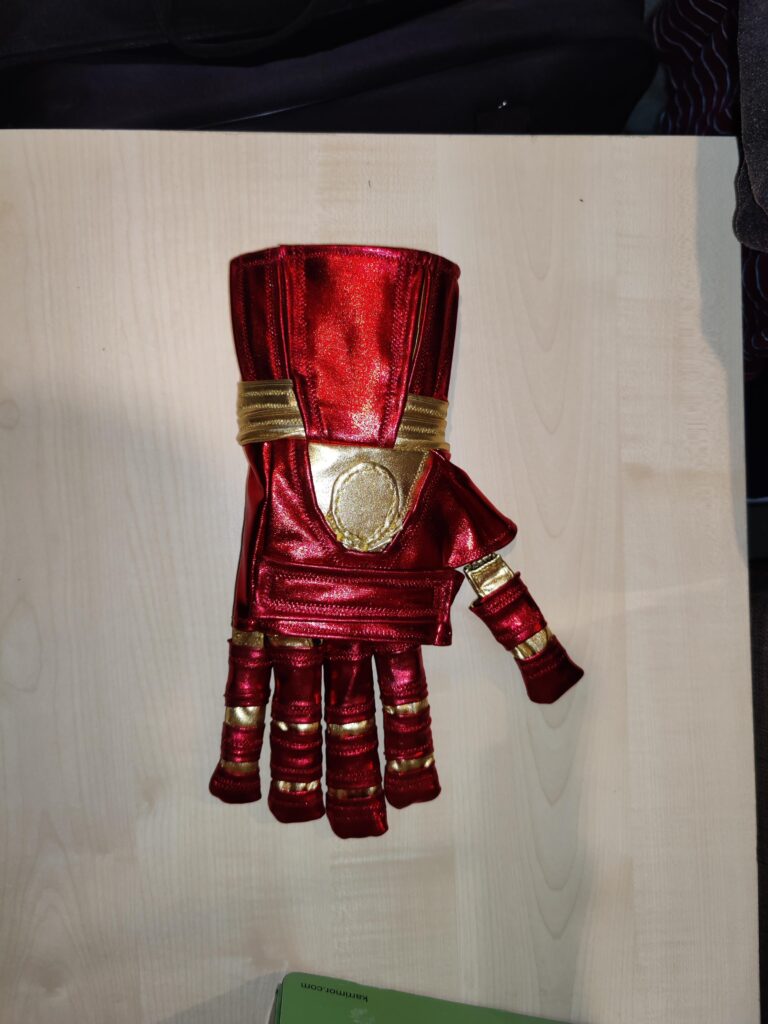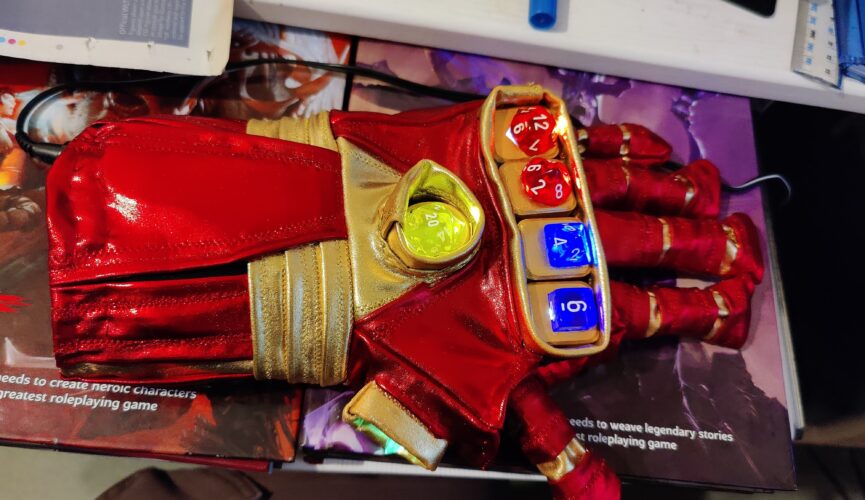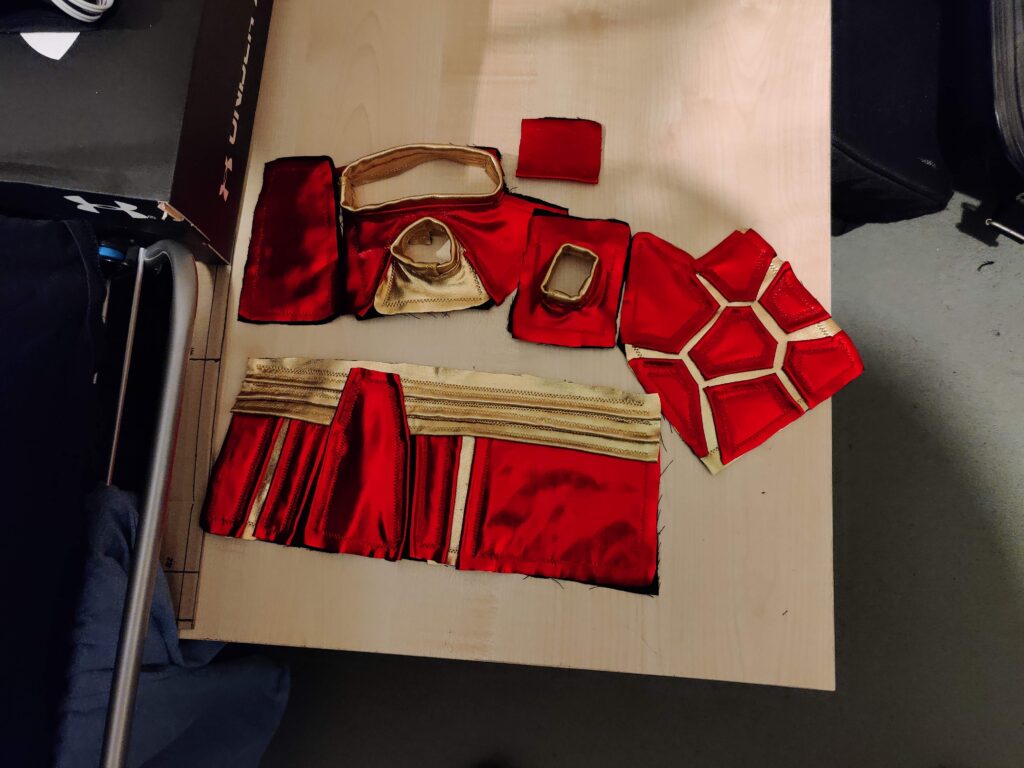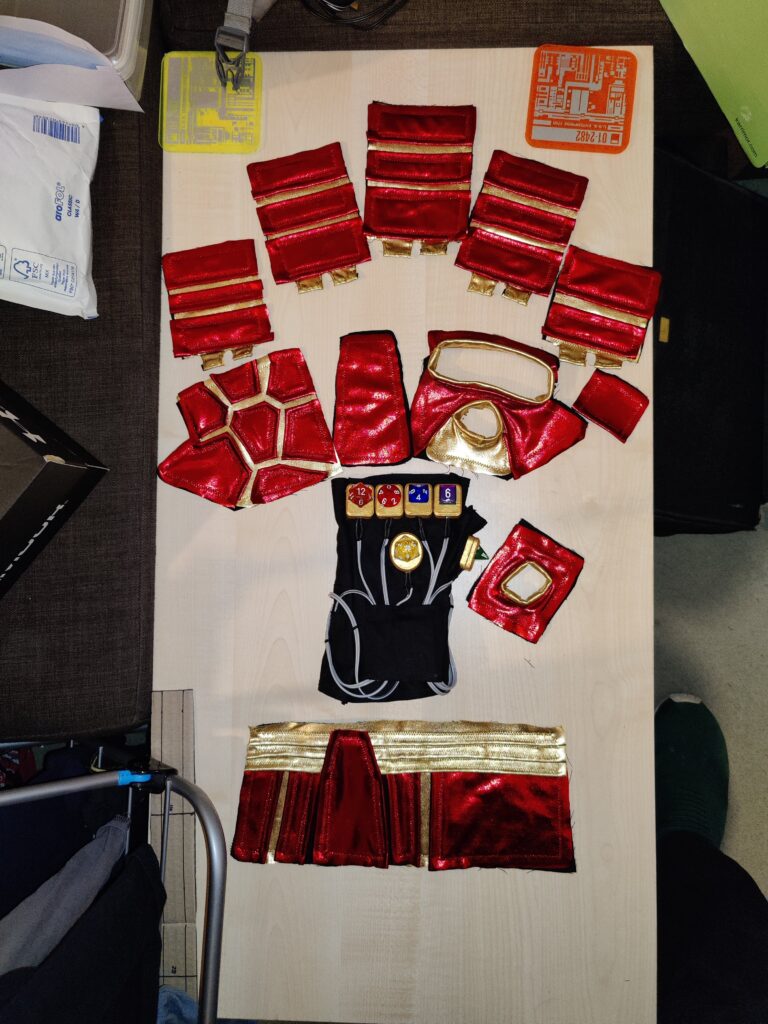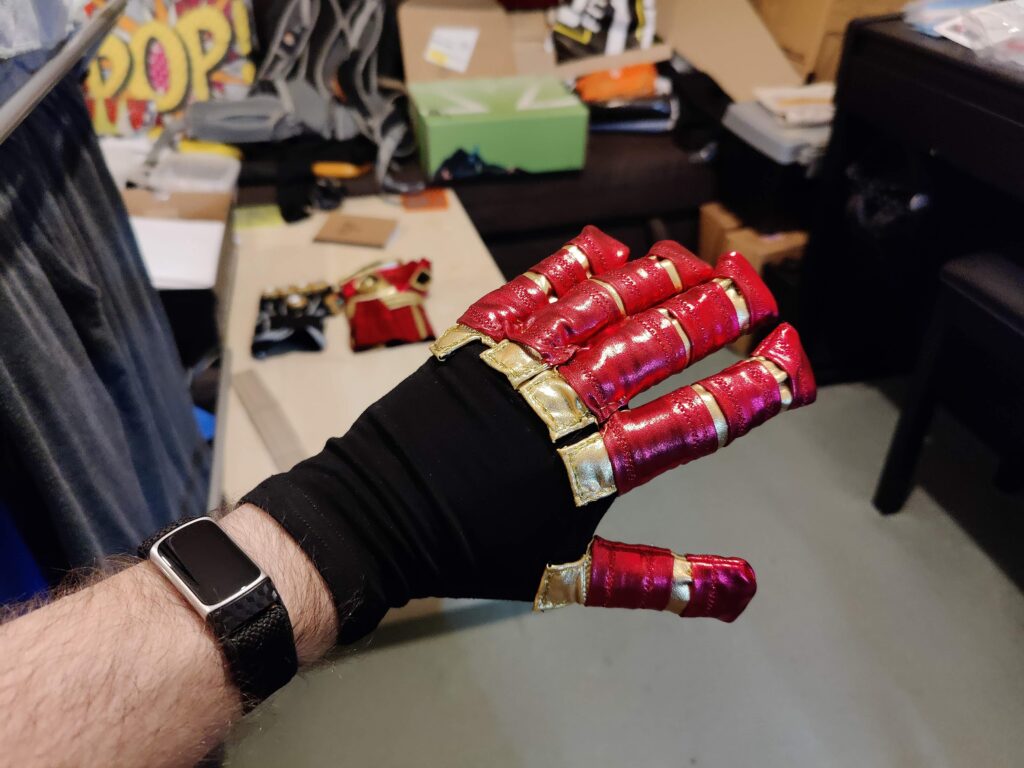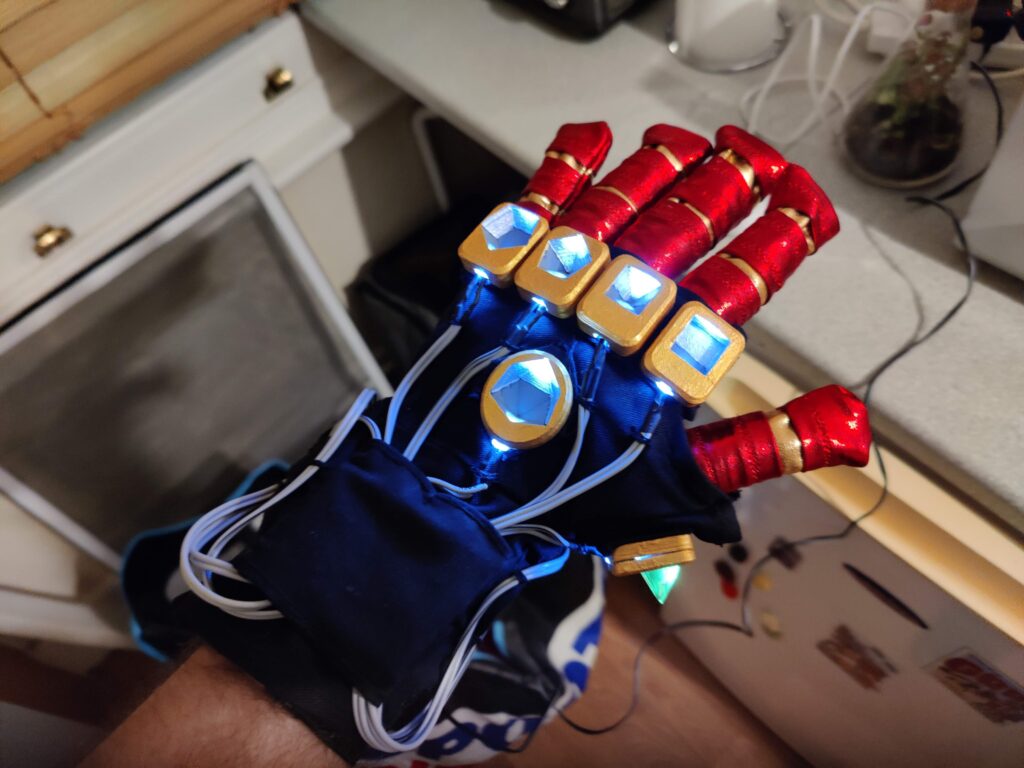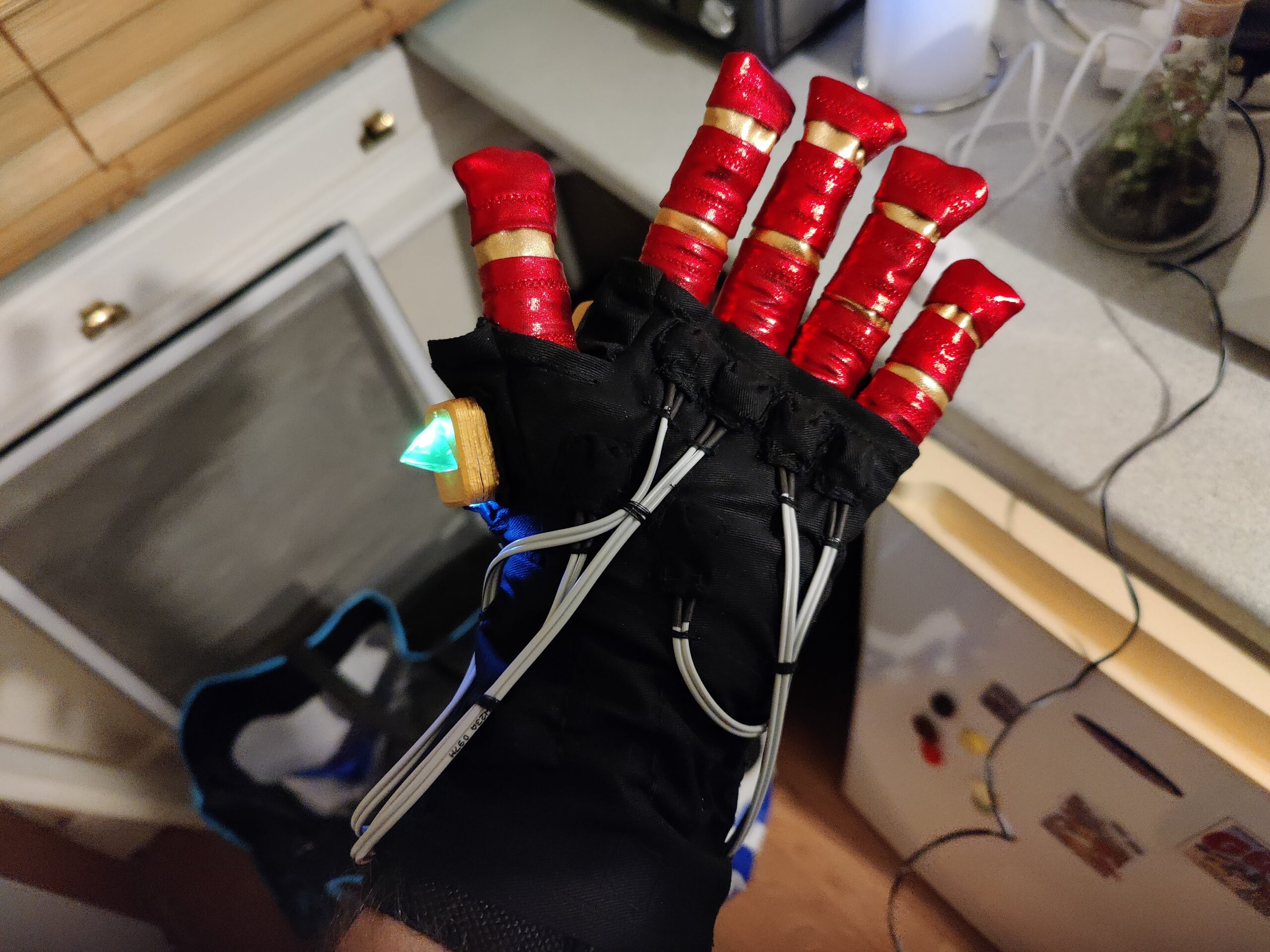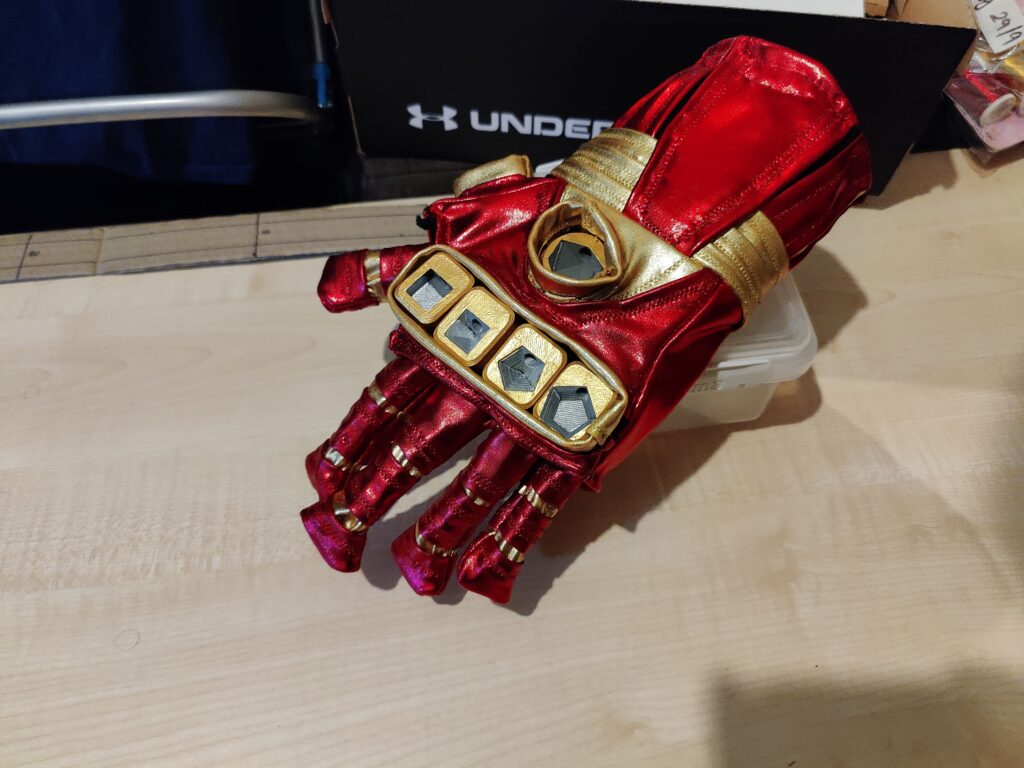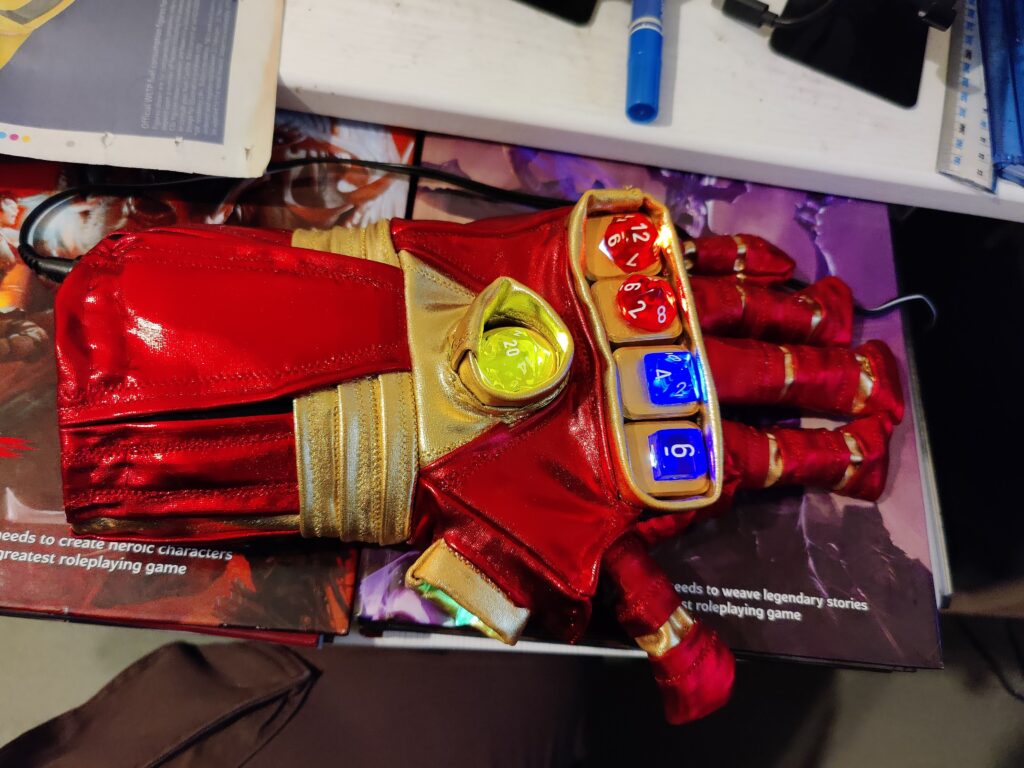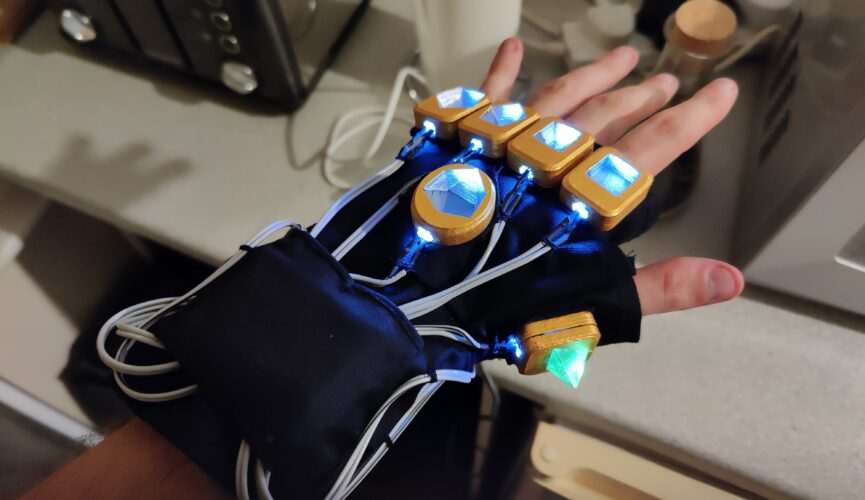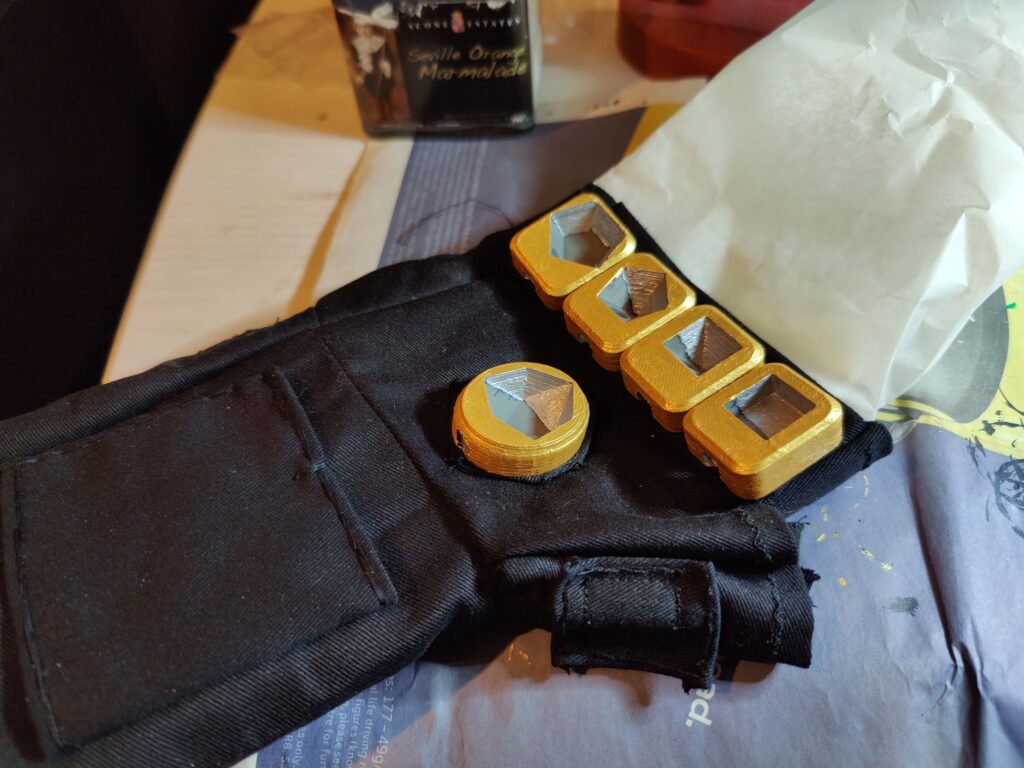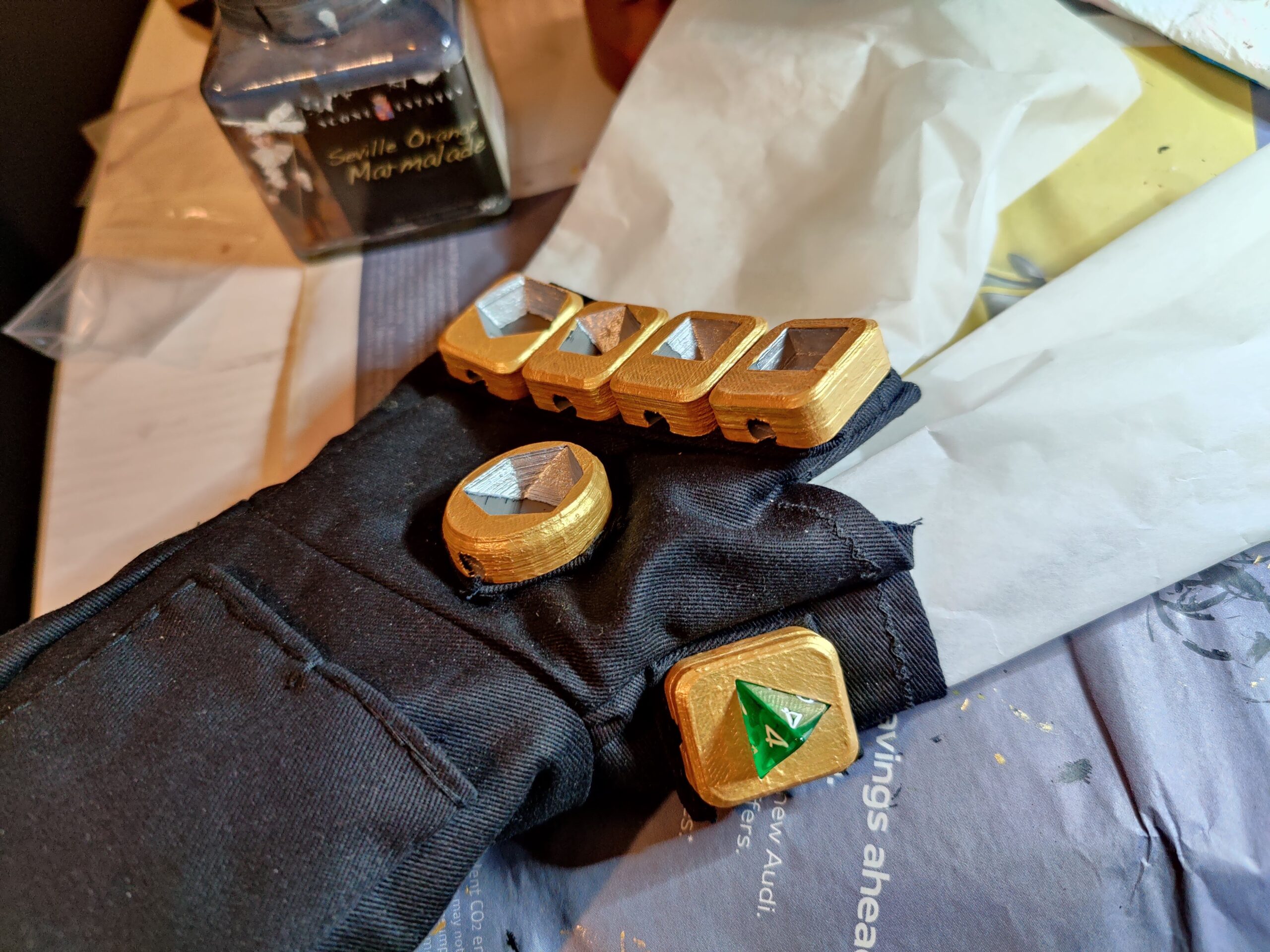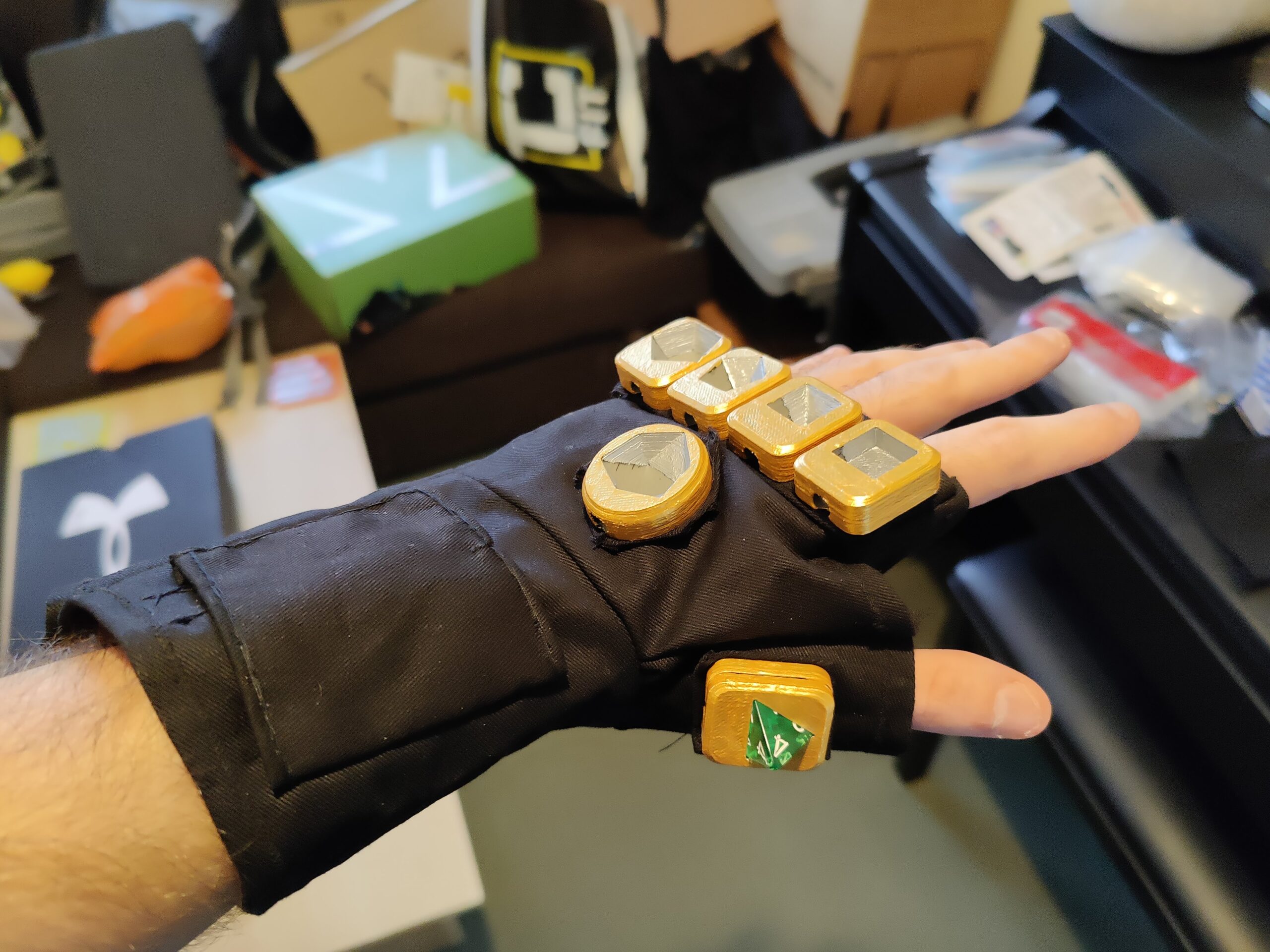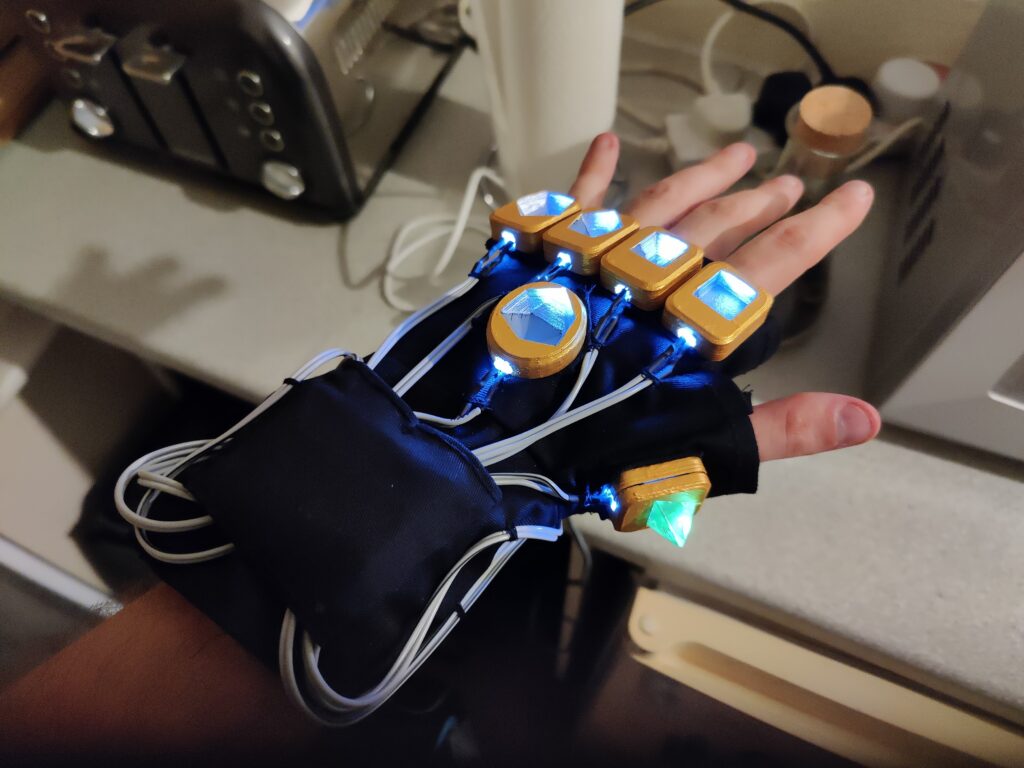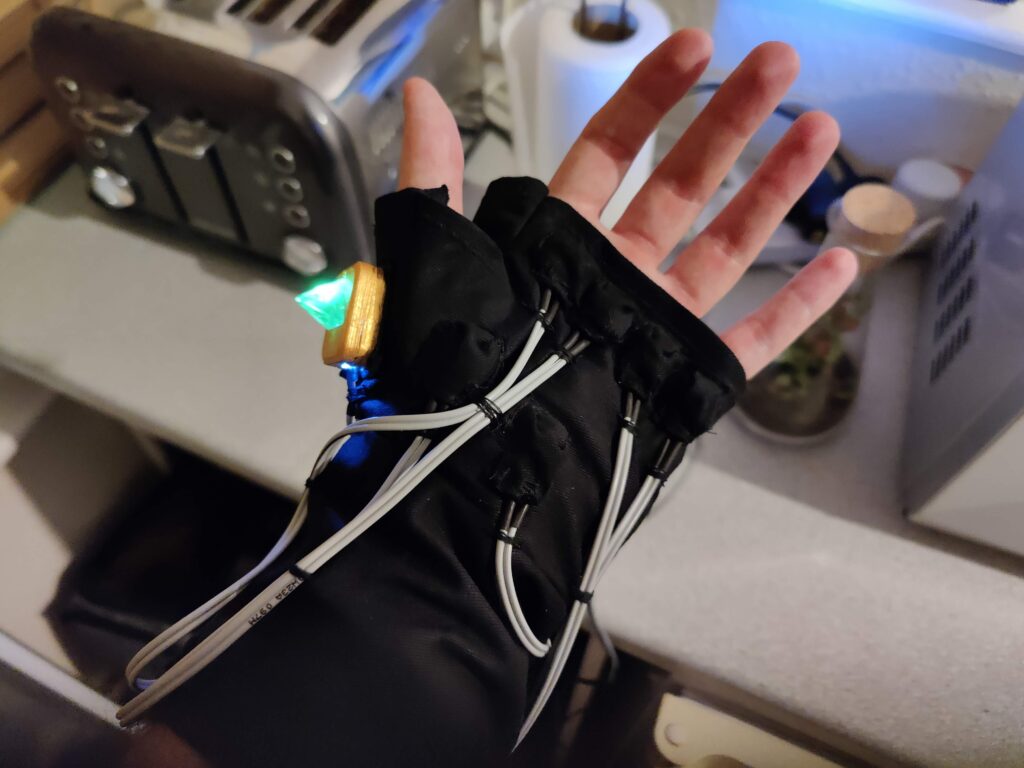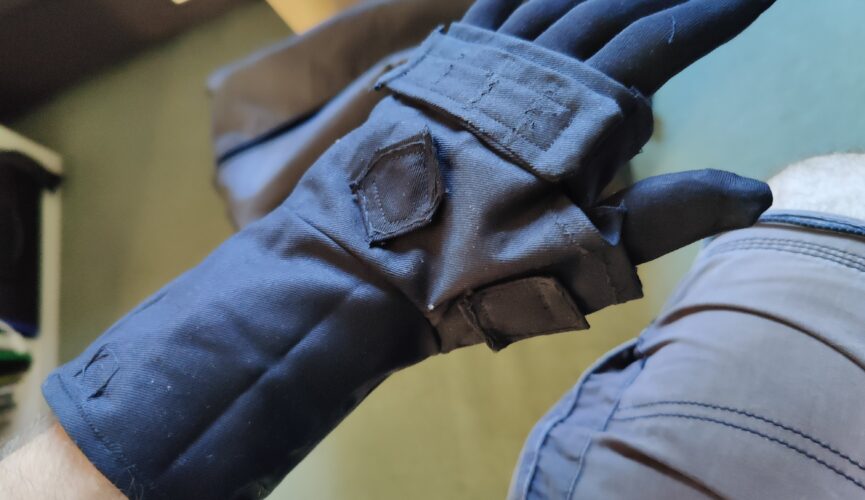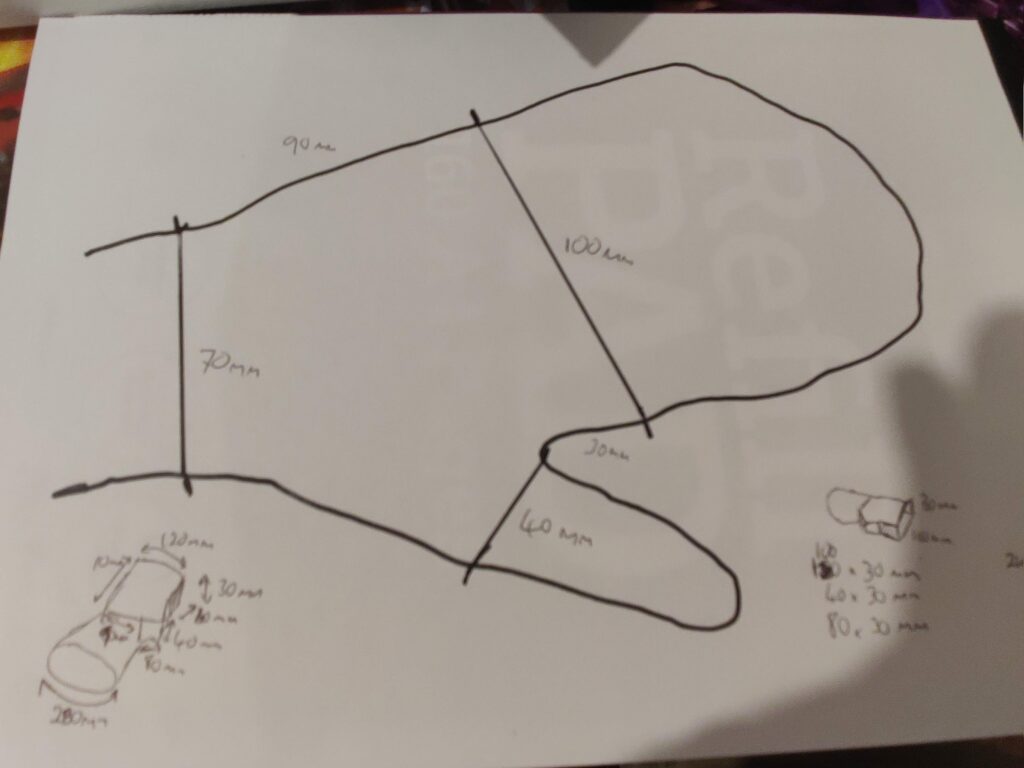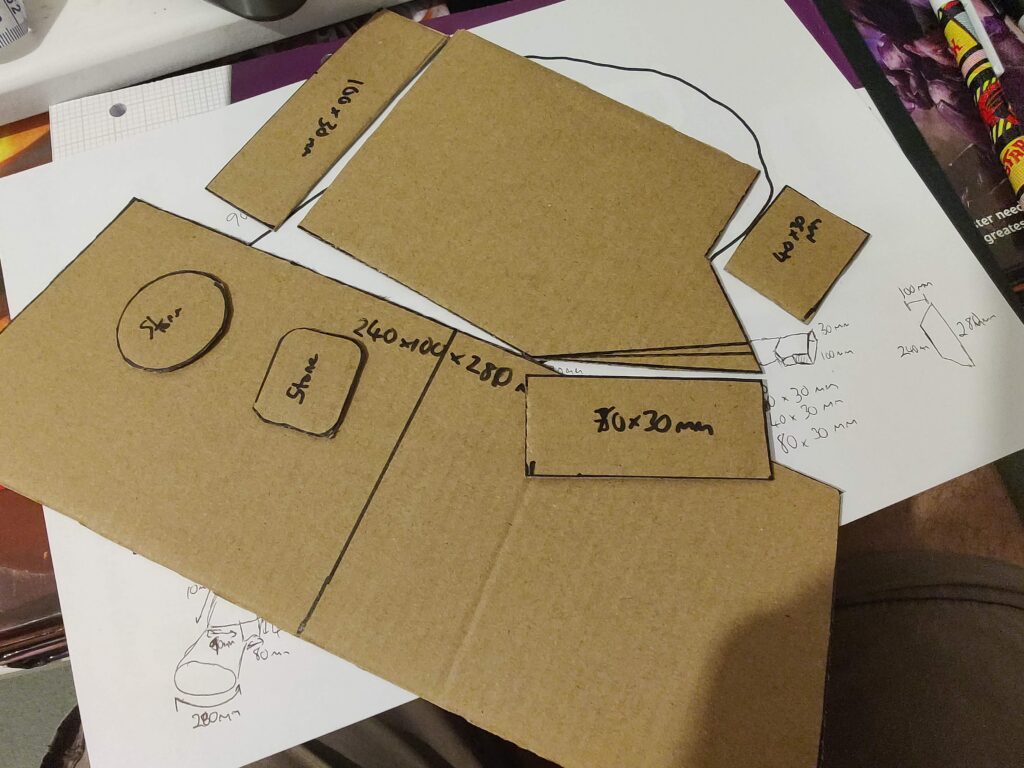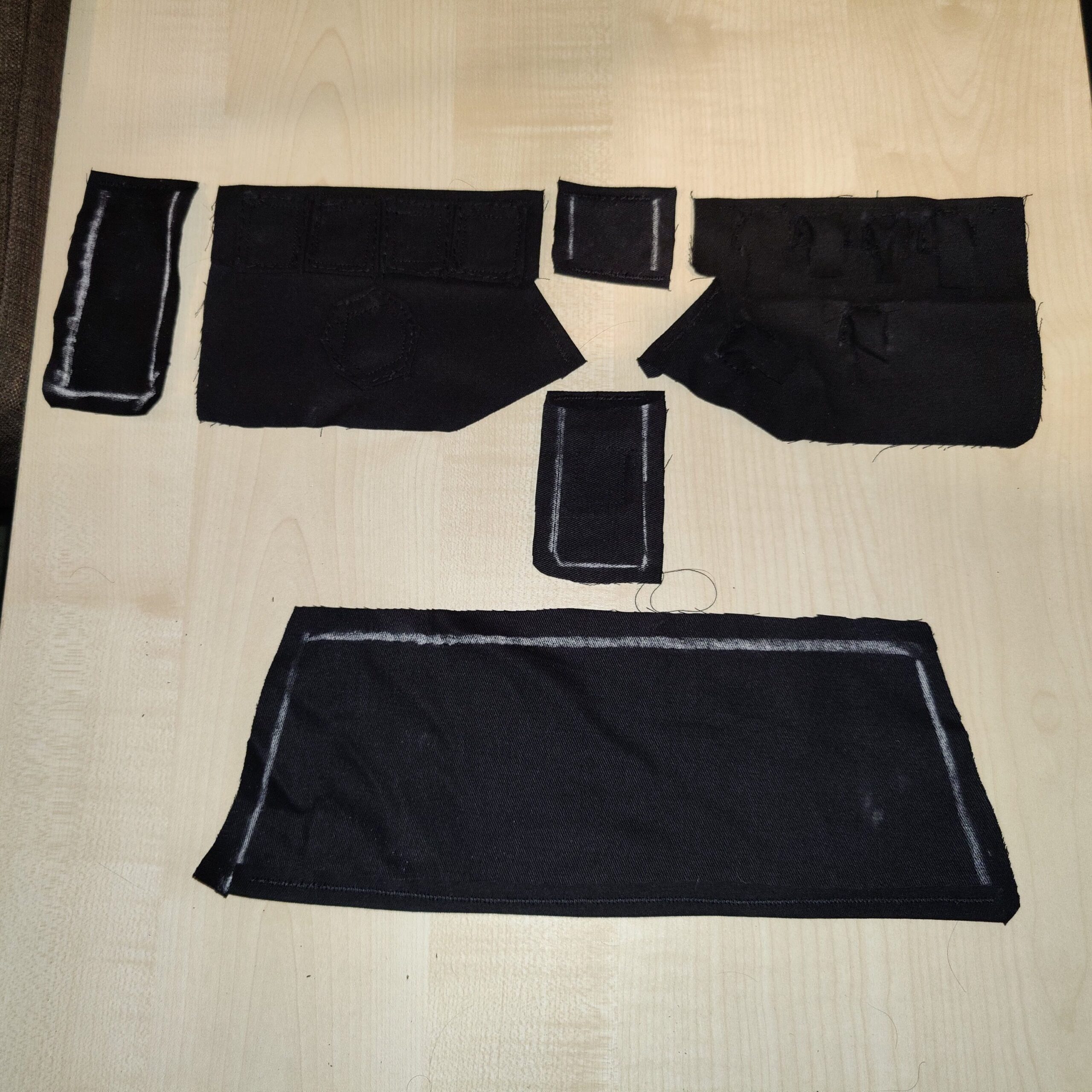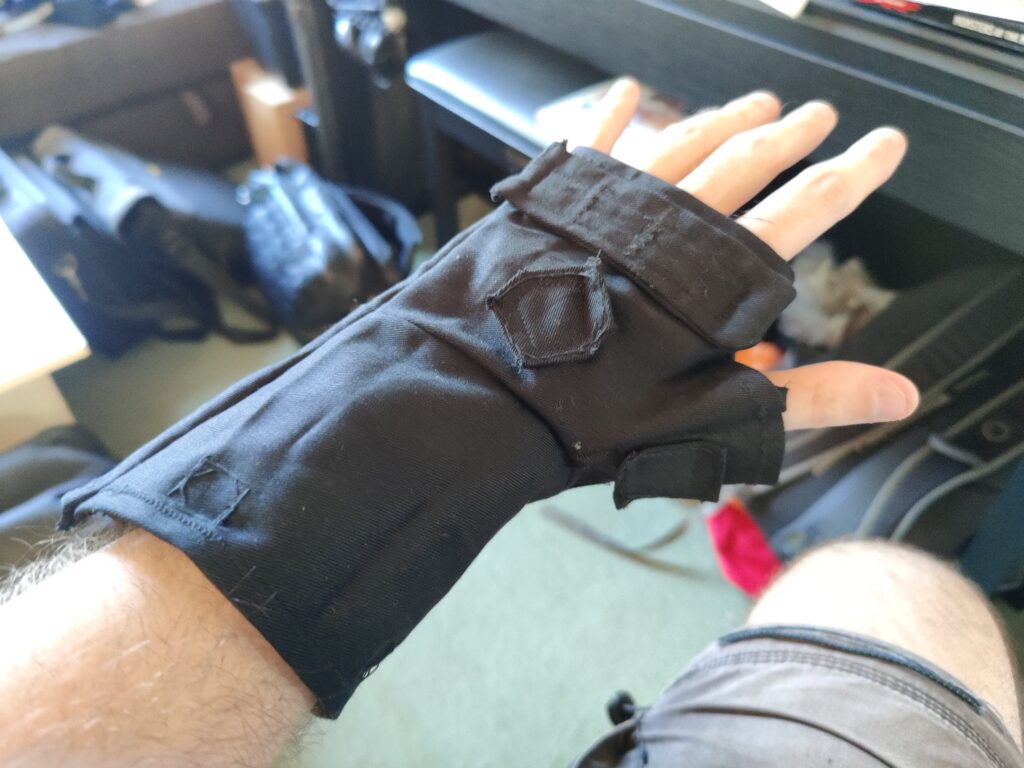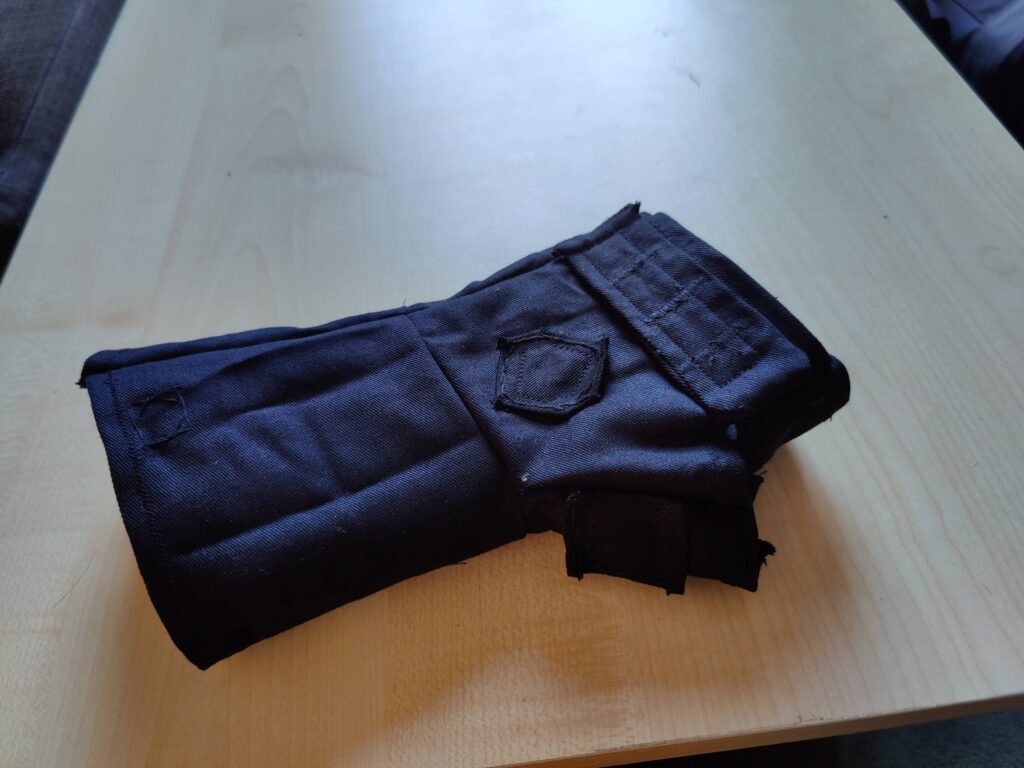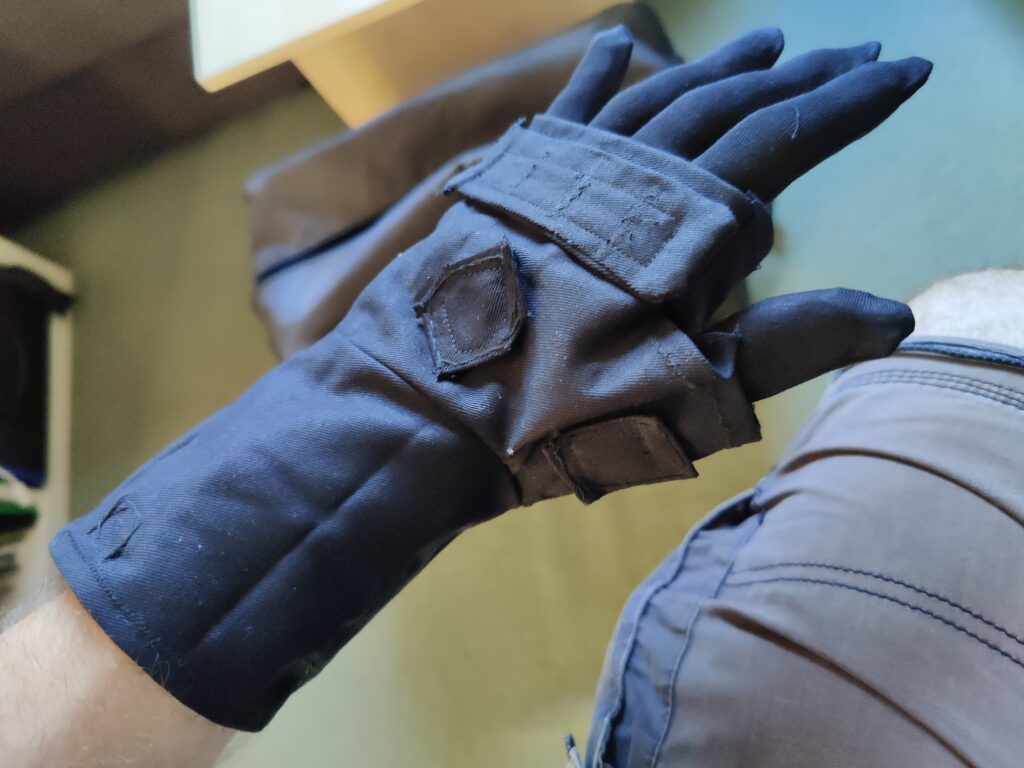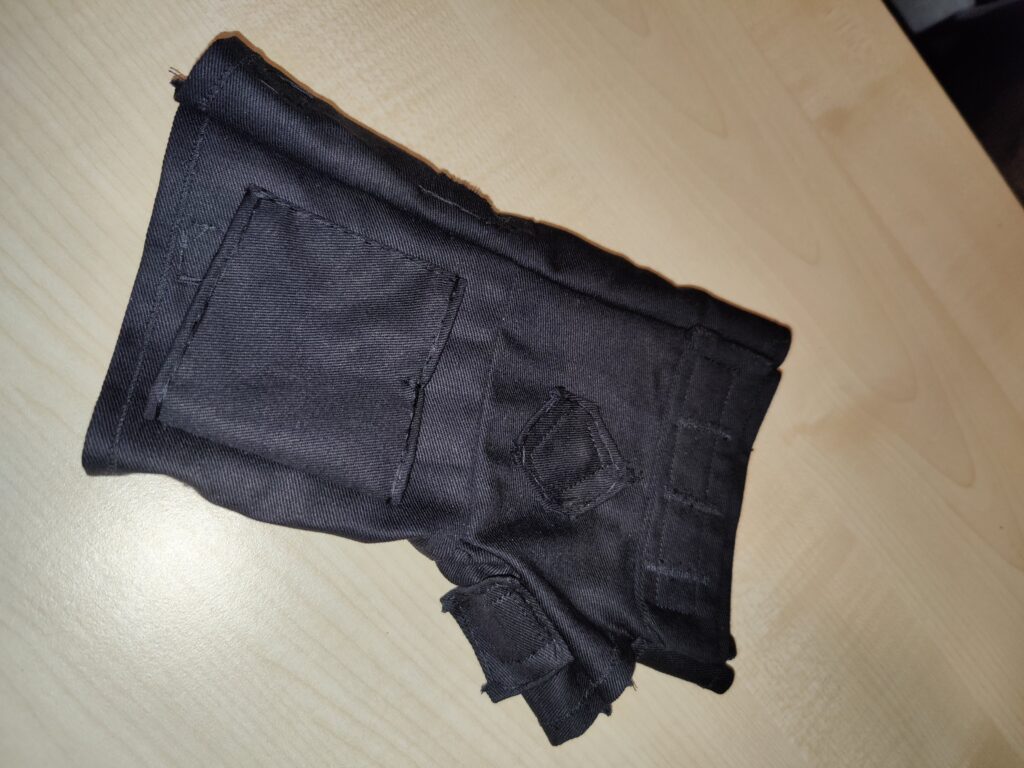So I decided somewhat last minute to go along to the London Film and Comic Con in Spring 2023. With Destination Trek later in the year in mind, I figured I could make a Trek costume which I could refine and reuse for that convention. I’ve had a bit of experience making Deep Space Nine/Voyager style uniforms for Destination Star Trek 2019, and had found the process straightforward enough that I reckoned I could make a teal medical/science version within the time available.
The method I used for the uniform involved sourcing a long sleeve black top to serve as a base and a teal t-shirt from which I would cut the shoulders. I already had a metal voyager-style pin badge as well, and the EMH doesn’t have a rank so no need for rank pips.
Of course an EMH outside of sickbay requires a Mobile Emitter, and thanks to the wonders of the internet and 3D printing it took me minutes to find an STL file and a few hours to print and paint it.
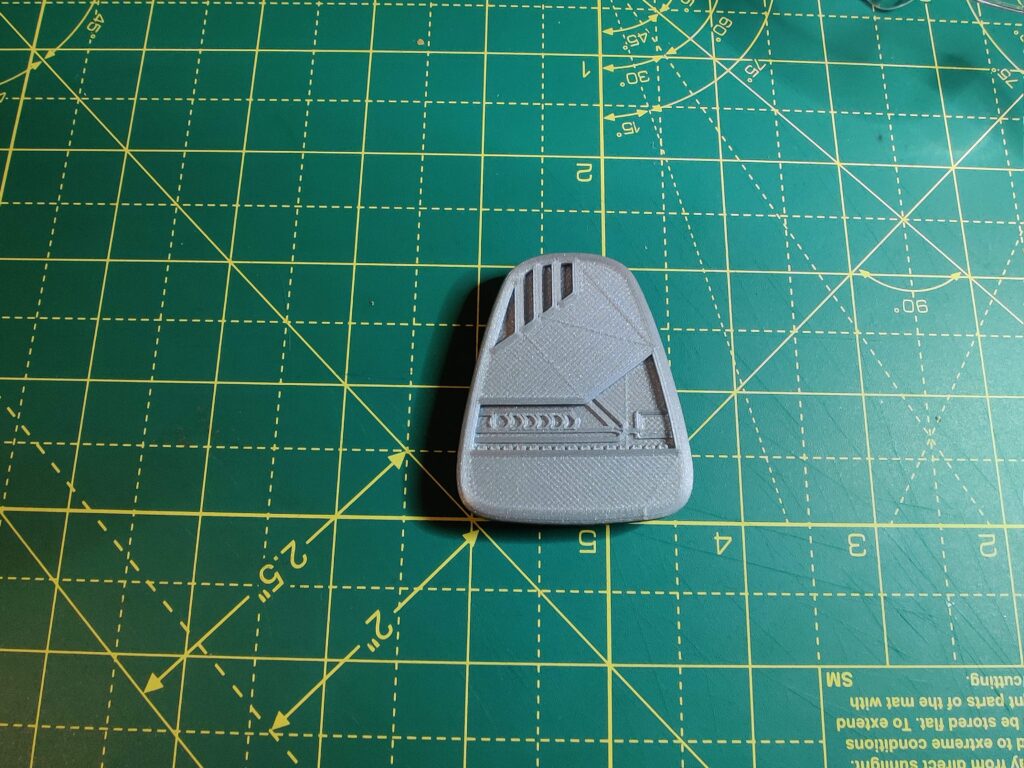
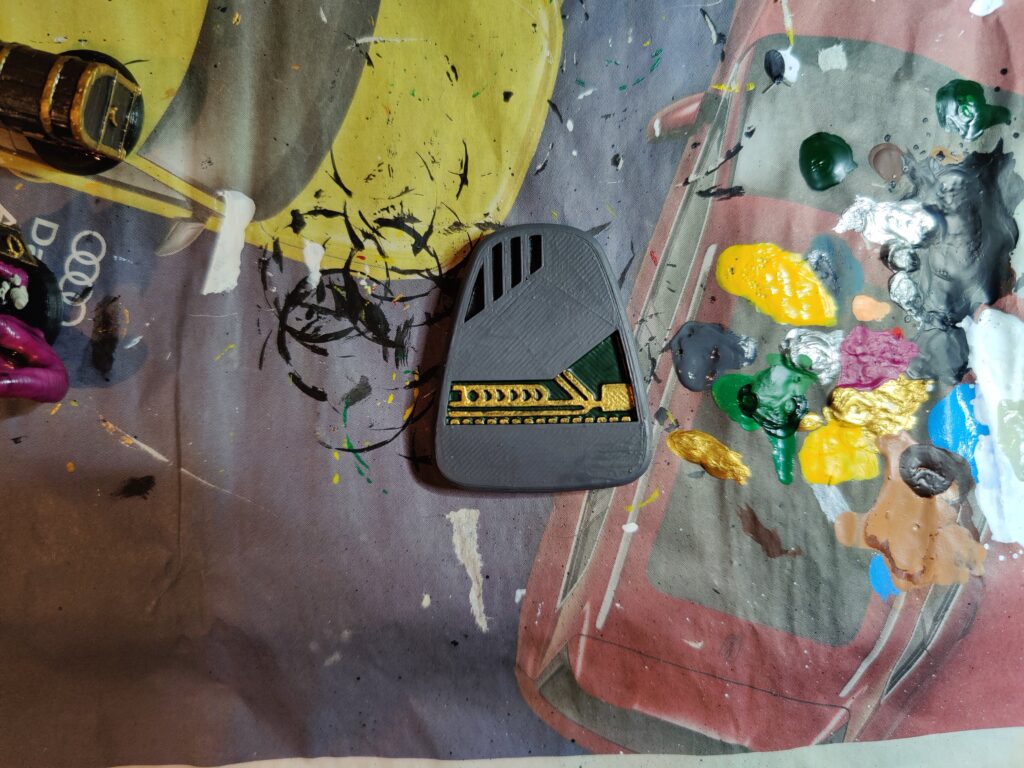
In the past I have wanted and been unable to find a good enough Tricorder, only ever finding a small one that didn’t really work for cosplay purposes. Once again my 3D printer offered a solution, though the tricorder model was pretty much the largest thing my small printer could manage. This is the model I chose to print, as it was broken down into small enough components.
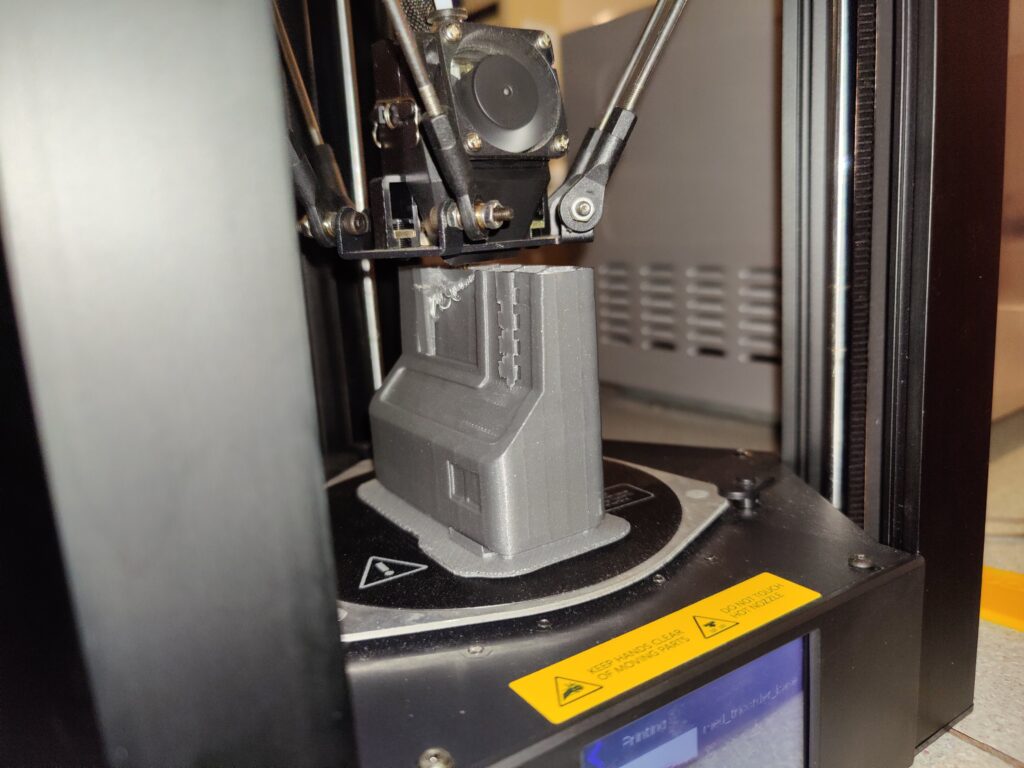
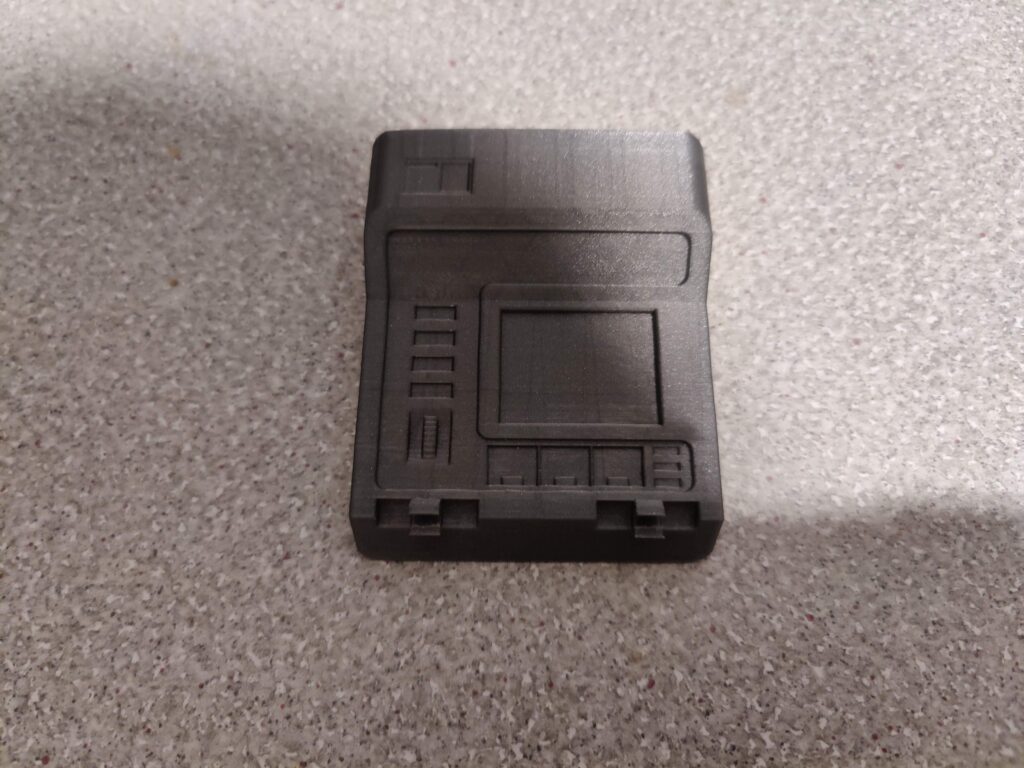

The print overall took several hours over several days. Fortunately I was still working from home so could supervise the printer over longer prints. Alas I didn’t have time to paint it before LFCC, so had to go with it unpainted as a prop.
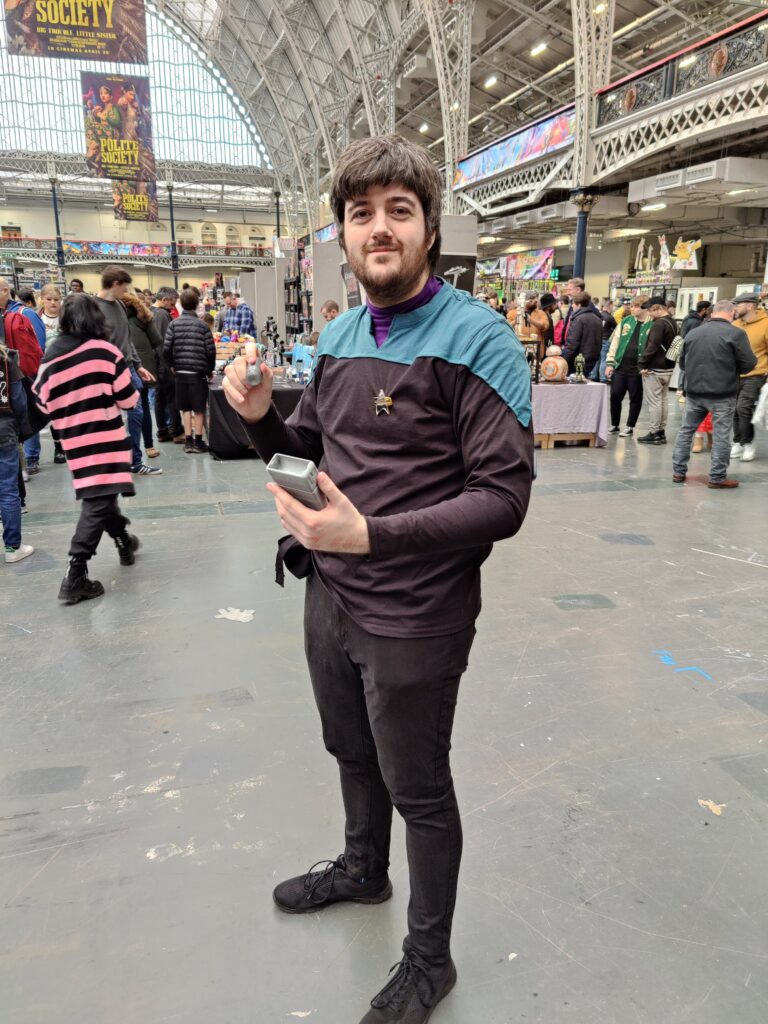
I found the metal pin badge a bit heavy and dragging on the uniform, so I decided one of the refinements would be to print a lighter magnetic voyager combadge, and I also intended to find or make a 3D printed hypospray to go with the tricorder (after I had painted it).

